

|
 |
Pieces AKA Mil gritos tiene la noche AKA One Thousand Cries Has the Night (Blu-ray)
[Blu-ray]
Blu-ray B - United Kingdom - Arrow Films Review written by and copyright: Paul Lewis (30th March 2017). |
|
The Film
 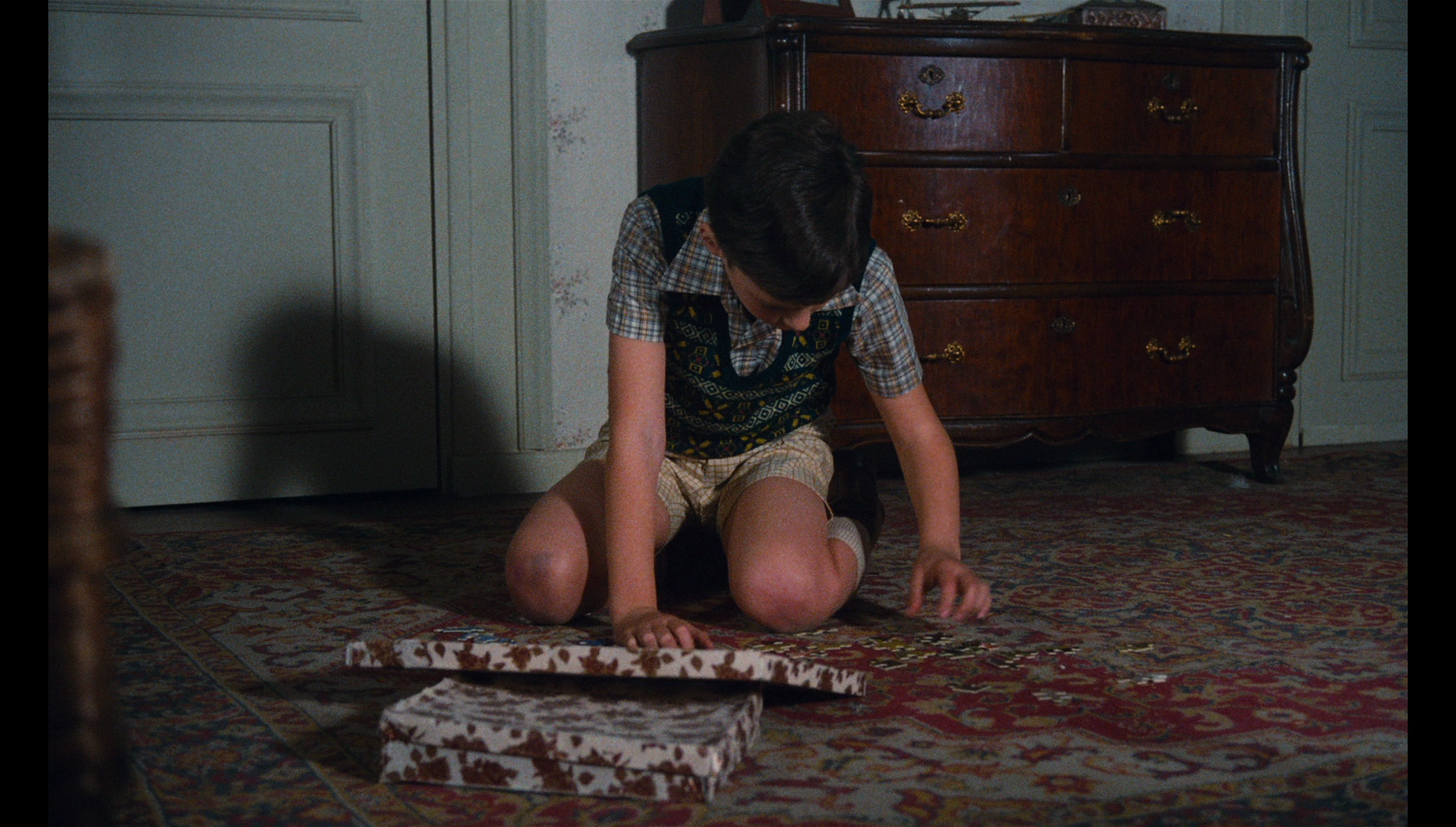 Pieces (Juan Piquer Simòn, 1982) Pieces (Juan Piquer Simòn, 1982)
In Boston, Massachusetts, in 1942, young Timmy Weldon is chastised for his mother for playing with a jigsaw puzzle which contains the image of a naked woman. Timmy’s mother attacks Timmy verbally and physically, smearing his memory of his deceased father – who has been killed in the war – and promising to kill her son if she catches him playing with a similar object in the future. In response to this, Timmy kills his mother with an axe and dismembers her corpse using a saw. In the present day, a pretty young university student rollerskates into a large mirror being carried by two labourers. The mirror shatters, the pieces falling to the ground. Shortly afterwards, the same student is lounging on the grass outside the university, where she is slaughtered by a mysterious chainsaw-wielding assailant who takes with him his victim’s severed head. The incident provokes the involvement of Detective Lieutenant Bracken (Christopher George) and Sergeant Holden (Frank Brana), who approach the Dean of the university (Edmund Purdom) and attempt to negotiate a way to investigate the murder without alarming the student population.  When another student is murdered whilst taking a midnight swim in the university’s swimming pool, Bracken and Holden realise they must investigate everyone, including the lonely Professor Brown (Jack Taylor) and the university’s groundsman Willard (Paul L Smith). Bracken soon comes to trust one of the students, Kendall (Ian Sera), asking Kendall to help him investigate the murders. Bracken also places one of his female detectives, tennis ace Mary Riggs (Lynda Day George), undercover within the university; Riggs’ cover is that she is the university’s new tennis tutor. Bracken asks Kendall to keep an eye on Riggs and ensure that she doesn’t come to harm. When another student is murdered whilst taking a midnight swim in the university’s swimming pool, Bracken and Holden realise they must investigate everyone, including the lonely Professor Brown (Jack Taylor) and the university’s groundsman Willard (Paul L Smith). Bracken soon comes to trust one of the students, Kendall (Ian Sera), asking Kendall to help him investigate the murders. Bracken also places one of his female detectives, tennis ace Mary Riggs (Lynda Day George), undercover within the university; Riggs’ cover is that she is the university’s new tennis tutor. Bracken asks Kendall to keep an eye on Riggs and ensure that she doesn’t come to harm.
The film opens in 1942, in Boston, Massachusetts. A boy, Timmy Weldon, is watched by his mother as he assembles a jigsaw puzzle in his bedroom. Timmy’s mother edges closer, and the look on her face changes from one of admiration to horror when she realises that the jigsaw puzzle Timmy is assembling bears the image of a naked woman. Timmy’s mother screams at him (‘Where did you find that filth?’) and slaps the boy. ‘That’s filth. What a way to begin. Just like your father. Tits, that’s all he ever cared about’, she exclaims. She derides the boy’s father, who has been killed in the war, strikes Timmy again and smashes his mirror. ‘I’ll kill you if I ever find stuff like that in the house again’, she promises. However, whilst her attention is diverted away from him, Timmy procures an axe and buries it in the head of his mother before proceeding to use a saw to dismember her body – just like the jigsaw puzzle. 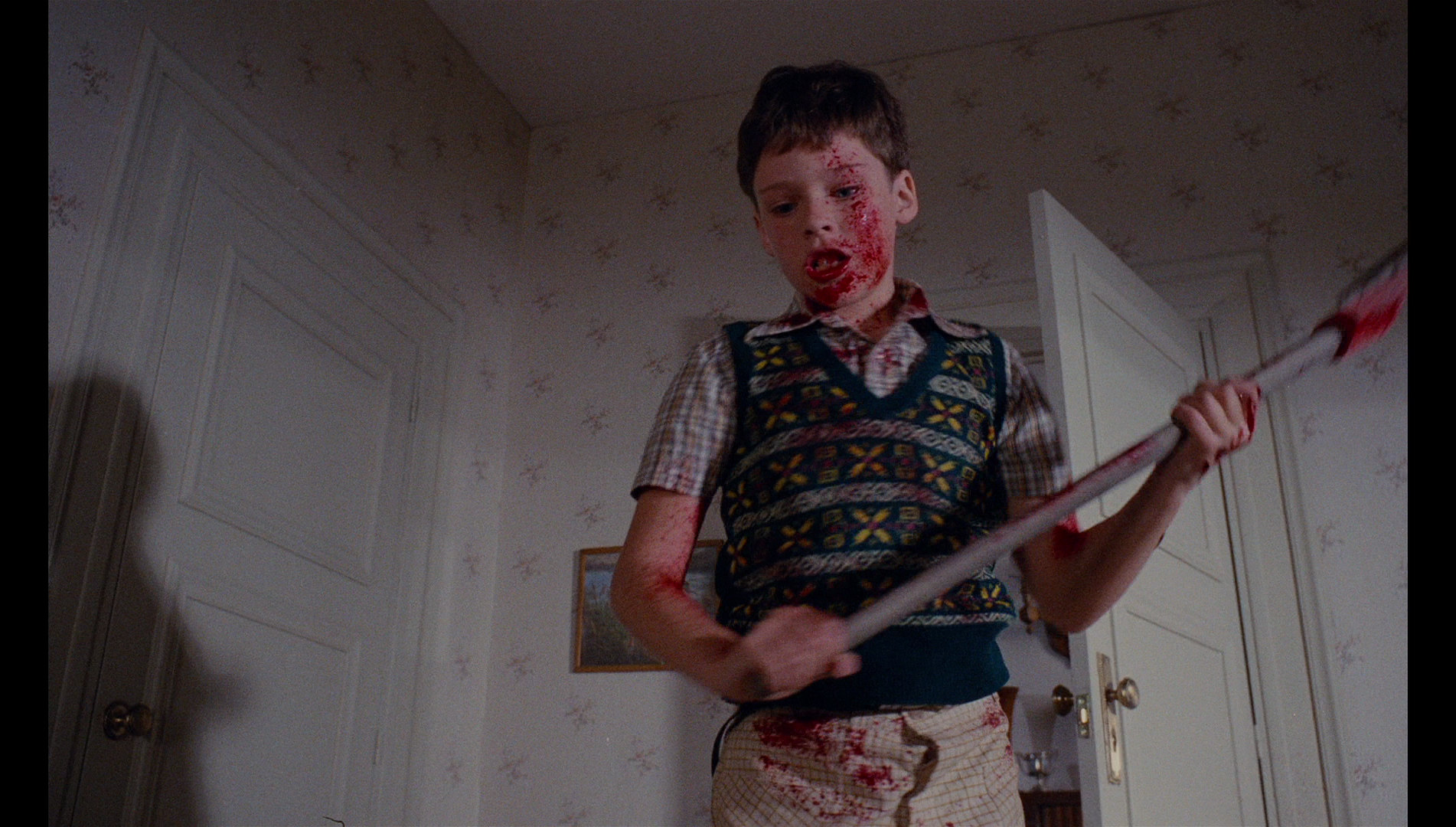 In this opening sequence Timmy’s mother is the corrupt ‘bad mother’, the poisonous matriarch, of traditional fairy tales, punishing the boy’s transgression (a curiosity about the opposite sex, represented via the jigsaw puzzle containing a photograph of a naked woman) with brutality, striking the boy and mocking the memory of his dead father. The father is the boy’s absent hero, having died during the war. This aspect of the story has some odd synchronistic similarities with the narrative of Alan Parker’s film version of Pink Floyd’s album The Wall, released in the same year as Pieces, in which the death of Pink’s (Bob Geldof) father during the Second World War leads to the possessive, controlling behaviour of Pink’s mother, resulting in the emotional ‘wall’ that Pink builds around himself. The ‘bad mother’ is a narrative paradigm that has filtered its way into modern popular culture by its repetition in children’s films such as Disney’s animated versions of these folk tales (for example, Snow White and the Seven Dwarfs, 1937). These ‘bad mothers’ have been explained as attempts to make horror more recognisable to the predominantly young audience for such stories, via the depiction of one of the most important figures in a child’s life (her/his mother) as a corrupt, wicked figure; alternatively, the archetype of the ‘bad mother’ has been framed as a patriarchal concept which is intended to establish a cultural paradigm by which women may be judged and punished. Here, in Pieces, the mother is depicted as an agent of repression whose overbearing impact on her son’s burgeoning interest in the opposite sex causes him to develop into a murderer, much like Norman Bates’ mother in Hitchcock’s Psycho (1960). Pieces’ opening sequence, with its depiction of young Timmy’s use of an axe to murder his mother, also has some strong similarities with the flashbacks in Romano Scavolini’s Nightmares in a Damaged Brain (1981), in which Tatum remembers the ‘primal scene’ from his childhood: accidentally witnessing his parents engaging in bondage before murdering them both with an axe. (The images of young Tatum wielding an axe in Nightmares in a Damaged Brain, often used in promotional materials of the film, is strikingly similar to the shot in Pieces in which we see Timmy burying his axe into the head of his mother.) In this opening sequence Timmy’s mother is the corrupt ‘bad mother’, the poisonous matriarch, of traditional fairy tales, punishing the boy’s transgression (a curiosity about the opposite sex, represented via the jigsaw puzzle containing a photograph of a naked woman) with brutality, striking the boy and mocking the memory of his dead father. The father is the boy’s absent hero, having died during the war. This aspect of the story has some odd synchronistic similarities with the narrative of Alan Parker’s film version of Pink Floyd’s album The Wall, released in the same year as Pieces, in which the death of Pink’s (Bob Geldof) father during the Second World War leads to the possessive, controlling behaviour of Pink’s mother, resulting in the emotional ‘wall’ that Pink builds around himself. The ‘bad mother’ is a narrative paradigm that has filtered its way into modern popular culture by its repetition in children’s films such as Disney’s animated versions of these folk tales (for example, Snow White and the Seven Dwarfs, 1937). These ‘bad mothers’ have been explained as attempts to make horror more recognisable to the predominantly young audience for such stories, via the depiction of one of the most important figures in a child’s life (her/his mother) as a corrupt, wicked figure; alternatively, the archetype of the ‘bad mother’ has been framed as a patriarchal concept which is intended to establish a cultural paradigm by which women may be judged and punished. Here, in Pieces, the mother is depicted as an agent of repression whose overbearing impact on her son’s burgeoning interest in the opposite sex causes him to develop into a murderer, much like Norman Bates’ mother in Hitchcock’s Psycho (1960). Pieces’ opening sequence, with its depiction of young Timmy’s use of an axe to murder his mother, also has some strong similarities with the flashbacks in Romano Scavolini’s Nightmares in a Damaged Brain (1981), in which Tatum remembers the ‘primal scene’ from his childhood: accidentally witnessing his parents engaging in bondage before murdering them both with an axe. (The images of young Tatum wielding an axe in Nightmares in a Damaged Brain, often used in promotional materials of the film, is strikingly similar to the shot in Pieces in which we see Timmy burying his axe into the head of his mother.)
 The killer’s ‘project’ begins when the pretty young university student rollerskates her way into disaster, colliding with a large wall-sized mirror being carried by two workmen. The film doesn’t make this point particularly clear, but it seems that the intentions of the filmmakers were for the audience to read this incident – or rather, the killer’s witnessing of it – as the act which spurs the killer on to committing his crimes. The student who collides with the mirror becomes the killer’s first victim, and from this young woman the killer steals her head; at the end of the film, when his ‘creation’ is revealed to the audience, it is this young woman’s head that sits atop it. The climax makes clear that the film’s antagonist is attempting to assemble a ‘Bride of Frankenstein’-like monster from the body parts of his victims, the killer’s obsession with this bricolage method of assembling what we may presume is for him an ‘ideal’ woman having its roots in his fascination with the jigsaw containing the photograph of the naked woman (and the dismemberment of his mother). The filmmakers might be consciously evoking the tendency in art, from classical sculpture to modern advertising and fashion photography, to depict the female body in fragments, as a corps morcelé/‘body in pieces’: contemporaneous examples of this trend can be seen in Guy Bourdin’s fashion photography for Vogue during the 1970s and 1980s. To some extent, this connects Pieces with pictures such as Fritz Lang’s Metropolis (1925), James Whale’s Bride of Frankenstein (1935), Georges Franju’s Les yeux sans visage (Eyes Without a Face, 1960), Jess Franco’s Gritos en la noche (The Awful Dr Orlof, 1962) and Terence Fisher’s Frankenstein Created Woman (1967) or even 1980s films such as John Hughes’ Weird Science (1985) and Frank Henenlotter’s Frankenhooker (1990); these are all films in which a man, usually a scientist, attempts to manufacture an ‘ideal’ woman, often resorting to murder to do so. Here in Pieces, of course, the film is stripped of the trappings of science-fiction or supernatural horror which infuse most of the aforementioned films, the lifeless assemblage of body parts (the titular pieces) falling out of a concealed space at the end of the picture. However, anyone who has seen the film will undoubtedly say that one of the most memorably ‘pieces’ of Pieces is the bizarre, completely unexpected shot in which this body springs to life to commit an act of ghastly mayhem. The moment is utterly illogical, with no rationalisation within the story – it is the ultimate non-sequitur in a film riddled with them: for example, the moment in which Kendall’s kung fu instructor (played by Bruce Le, star of numerous cheapjack martial arts films and ‘Bruceploitation’ pictures) leaps from nowhere to attack Mary, only for Mary to swiftly overpower him by kicking him in the groin. ‘It’s my kung fu professor!’, Kendall asserts in astonishment upon witnessing this. ‘Well, I was doing my footing, and all of a sudden I was attacked [by Mary Riggs]’, the martial artist asserts, ‘But I see it was nothing’. However, Pieces shares the idea of having a corpse come to life at the end of a film which – to that point in its narrative – has demonstrated no concern with the supernatural with a number of roughly contemporaneous films: William Lustig’s Maniac (1980), Joseph Ellison’s Don’t Go in the House (1979) and Joe D’Amato’s Buio Omega (Blue Holocaust/Beyond the Darkness, 1979). The killer’s ‘project’ begins when the pretty young university student rollerskates her way into disaster, colliding with a large wall-sized mirror being carried by two workmen. The film doesn’t make this point particularly clear, but it seems that the intentions of the filmmakers were for the audience to read this incident – or rather, the killer’s witnessing of it – as the act which spurs the killer on to committing his crimes. The student who collides with the mirror becomes the killer’s first victim, and from this young woman the killer steals her head; at the end of the film, when his ‘creation’ is revealed to the audience, it is this young woman’s head that sits atop it. The climax makes clear that the film’s antagonist is attempting to assemble a ‘Bride of Frankenstein’-like monster from the body parts of his victims, the killer’s obsession with this bricolage method of assembling what we may presume is for him an ‘ideal’ woman having its roots in his fascination with the jigsaw containing the photograph of the naked woman (and the dismemberment of his mother). The filmmakers might be consciously evoking the tendency in art, from classical sculpture to modern advertising and fashion photography, to depict the female body in fragments, as a corps morcelé/‘body in pieces’: contemporaneous examples of this trend can be seen in Guy Bourdin’s fashion photography for Vogue during the 1970s and 1980s. To some extent, this connects Pieces with pictures such as Fritz Lang’s Metropolis (1925), James Whale’s Bride of Frankenstein (1935), Georges Franju’s Les yeux sans visage (Eyes Without a Face, 1960), Jess Franco’s Gritos en la noche (The Awful Dr Orlof, 1962) and Terence Fisher’s Frankenstein Created Woman (1967) or even 1980s films such as John Hughes’ Weird Science (1985) and Frank Henenlotter’s Frankenhooker (1990); these are all films in which a man, usually a scientist, attempts to manufacture an ‘ideal’ woman, often resorting to murder to do so. Here in Pieces, of course, the film is stripped of the trappings of science-fiction or supernatural horror which infuse most of the aforementioned films, the lifeless assemblage of body parts (the titular pieces) falling out of a concealed space at the end of the picture. However, anyone who has seen the film will undoubtedly say that one of the most memorably ‘pieces’ of Pieces is the bizarre, completely unexpected shot in which this body springs to life to commit an act of ghastly mayhem. The moment is utterly illogical, with no rationalisation within the story – it is the ultimate non-sequitur in a film riddled with them: for example, the moment in which Kendall’s kung fu instructor (played by Bruce Le, star of numerous cheapjack martial arts films and ‘Bruceploitation’ pictures) leaps from nowhere to attack Mary, only for Mary to swiftly overpower him by kicking him in the groin. ‘It’s my kung fu professor!’, Kendall asserts in astonishment upon witnessing this. ‘Well, I was doing my footing, and all of a sudden I was attacked [by Mary Riggs]’, the martial artist asserts, ‘But I see it was nothing’. However, Pieces shares the idea of having a corpse come to life at the end of a film which – to that point in its narrative – has demonstrated no concern with the supernatural with a number of roughly contemporaneous films: William Lustig’s Maniac (1980), Joseph Ellison’s Don’t Go in the House (1979) and Joe D’Amato’s Buio Omega (Blue Holocaust/Beyond the Darkness, 1979).
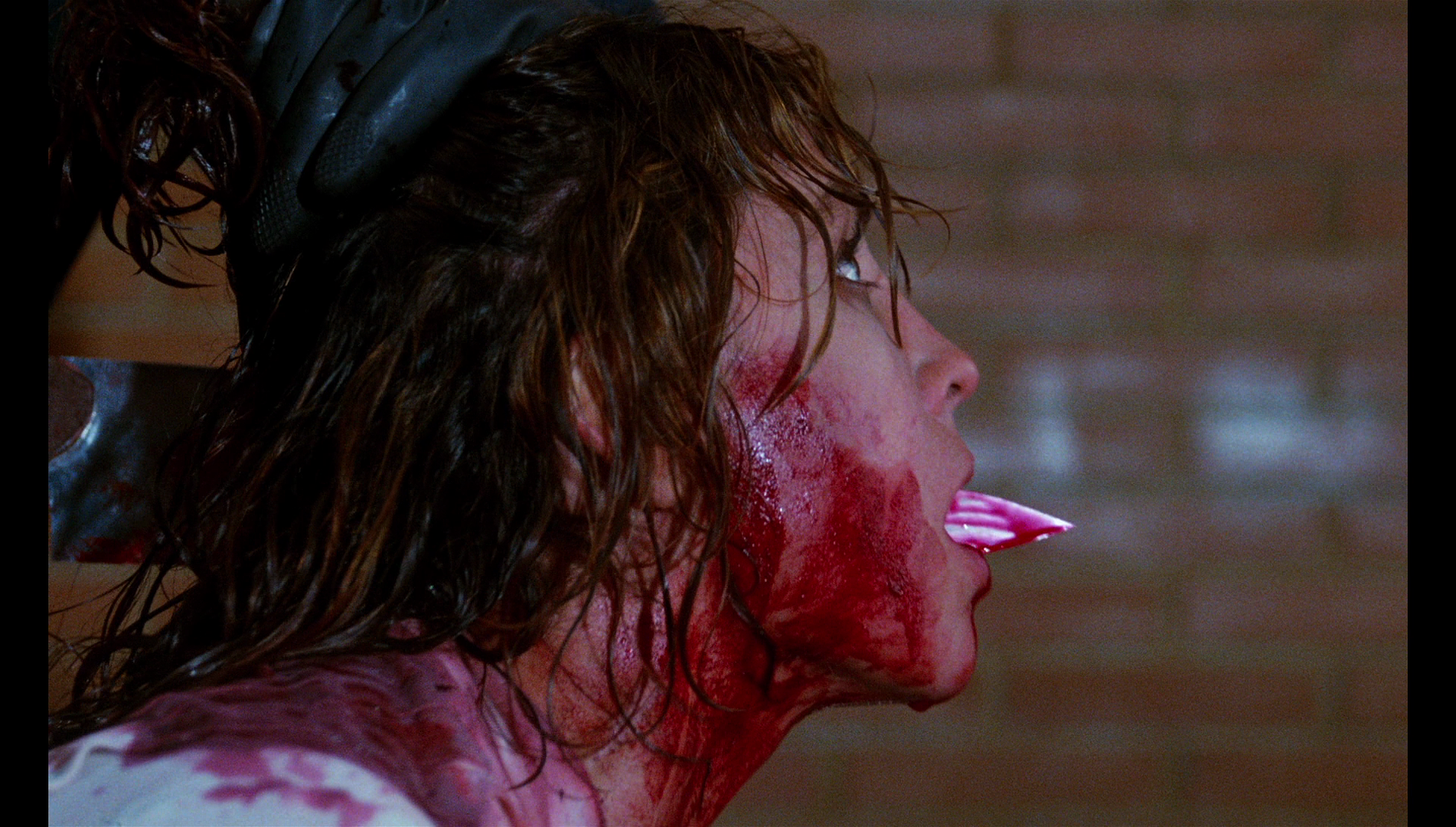 Much like its antagonist’s project, Pieces is a bizarre Frankenstein’s monster, comprising a hodgepodge of images and ideas from various genres: the classic ‘whodunit’, the then-popular American bodycount/slasher film, the thrilling all’italiana (Italian-style thrillers) such as those of Mario Bava and Riccardo Freda, the chainsaw from The Texas Chain Saw Massacre (Tobe Hooper, 1974), the kung fu instructor who leaps onto the screen as if he has wandered into the picture from a martial arts film. Most obviously, the setting in an American university allies Pieces with a number of American slasher films with similar settings: for example, The House on Sorority Row (Mark Rosman, 1983), Graduation Day (Herb Freed, 1981), Happy Birthday to Me (J Lee Thompson, 1981) and Splatter University (Richard W Haines, 1984). Meanwhile, the killer’s costume (a black fedora; black gloves) and the film’s more fetishistic imagery (close-up shots of the killer’s black boots advancing towards his victims; the killer’s obsessive handling of his mother’s dress and high heeled shoes) recall the thrilling all’italiana of Dario Argento in particular (for example, L’uccello dalle piume di cristallo/The Bird with the Crystal Plumage, 1970). Elsewhere, some of the imagery seems to allude directly to other films: the chainsaw seems the most obvious point of reference; but there is also a shot in which the killer buries the knife into the back of a victim’s skull only for the tip of the blade to protrude from her open mouth, and this shot seems to deliberately reference Tom Savini’s most famous gore effect from Joseph Zito’s The Prowler/Rosemary’s Killer (1981), in which the killer thrusts a bayonet through the skull of one of his victims. (Lucio Fulci’s Quella villa accanto al cimitero/The House by the Cemetery, 1981, features a very similar gore effect too.) Much like its antagonist’s project, Pieces is a bizarre Frankenstein’s monster, comprising a hodgepodge of images and ideas from various genres: the classic ‘whodunit’, the then-popular American bodycount/slasher film, the thrilling all’italiana (Italian-style thrillers) such as those of Mario Bava and Riccardo Freda, the chainsaw from The Texas Chain Saw Massacre (Tobe Hooper, 1974), the kung fu instructor who leaps onto the screen as if he has wandered into the picture from a martial arts film. Most obviously, the setting in an American university allies Pieces with a number of American slasher films with similar settings: for example, The House on Sorority Row (Mark Rosman, 1983), Graduation Day (Herb Freed, 1981), Happy Birthday to Me (J Lee Thompson, 1981) and Splatter University (Richard W Haines, 1984). Meanwhile, the killer’s costume (a black fedora; black gloves) and the film’s more fetishistic imagery (close-up shots of the killer’s black boots advancing towards his victims; the killer’s obsessive handling of his mother’s dress and high heeled shoes) recall the thrilling all’italiana of Dario Argento in particular (for example, L’uccello dalle piume di cristallo/The Bird with the Crystal Plumage, 1970). Elsewhere, some of the imagery seems to allude directly to other films: the chainsaw seems the most obvious point of reference; but there is also a shot in which the killer buries the knife into the back of a victim’s skull only for the tip of the blade to protrude from her open mouth, and this shot seems to deliberately reference Tom Savini’s most famous gore effect from Joseph Zito’s The Prowler/Rosemary’s Killer (1981), in which the killer thrusts a bayonet through the skull of one of his victims. (Lucio Fulci’s Quella villa accanto al cimitero/The House by the Cemetery, 1981, features a very similar gore effect too.)
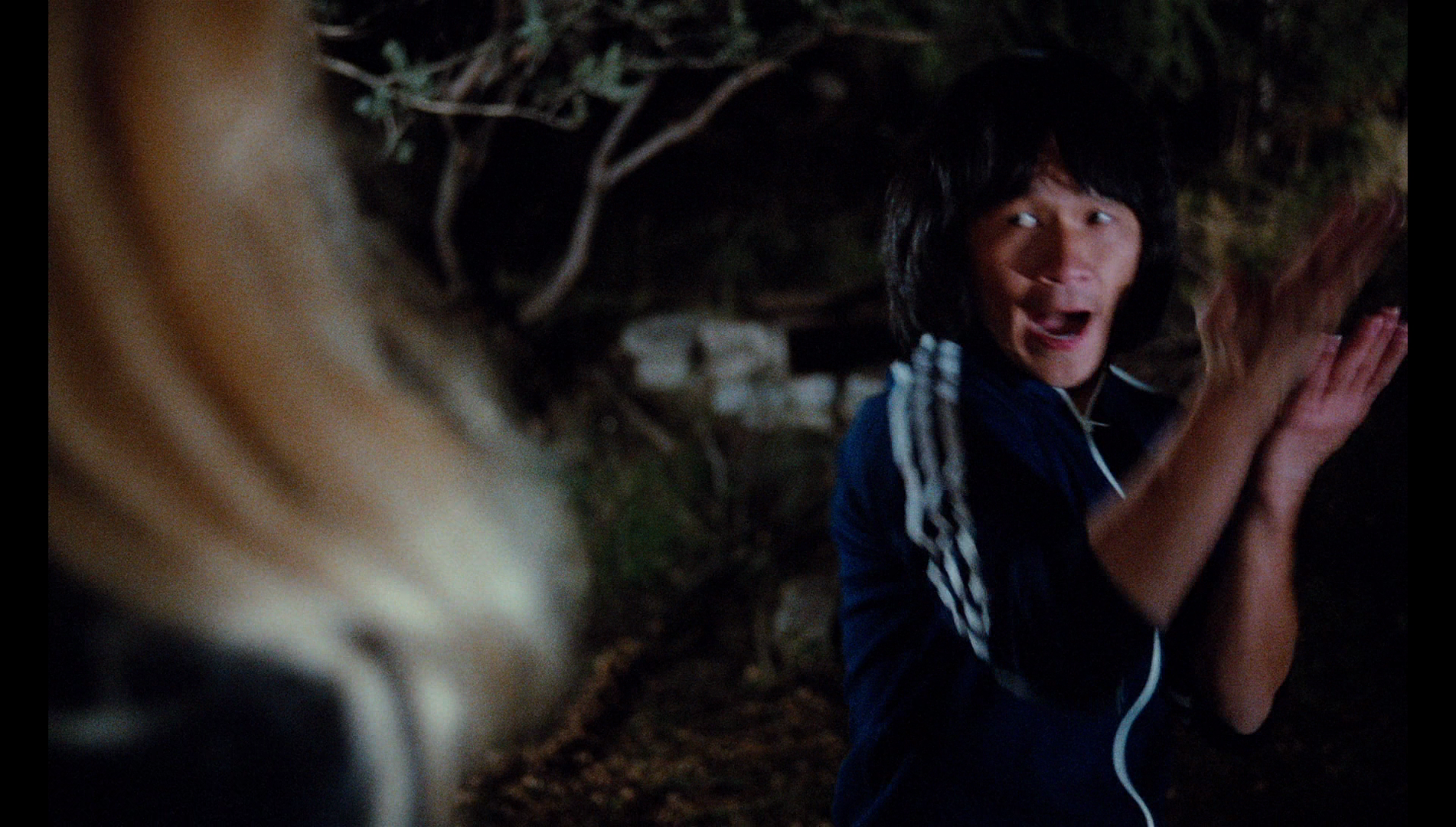 However, Pieces’ disjointed, piecemeal nature and its near-constant use of narrative ‘curveballs’ is a significant part of its appeal, along with the goofball dubbing in the English version. Logic is almost completely absent (one of the victims unknowingly gets into a lift with the killer, despite the fact that he’s carrying a chainsaw inside the university building). The story is cursory; the film is held together by the electrocardiogram thrills offered within its setpieces. The film’s major appeal lies in its juxtaposition of risible dialogue with excessive moments of violence: a girl being dismembered with a chainsaw on a lawn outside the university building (an act which bizarrely isn’t witnessed by anyone); another student being dismembered by the same chainsaw in a lift. The picture offers numerous red herrings and near the climax features an Agatha Christie-esque gathering-of-the-suspects. We know the killer is Timmy, but we don’t know which of the adult characters Timmy has grown into: is it the university’s Bud Spencer-alike groundsman Willard (played by Paul L Smith), or is it the university’s biology lecturer Professor Brown (Jack Taylor), who is the subject of much mockery by his female students and who, strangely, has in his possession a skull of a sixteen year old girl which he claims was given to him by one of his students? However, Pieces’ disjointed, piecemeal nature and its near-constant use of narrative ‘curveballs’ is a significant part of its appeal, along with the goofball dubbing in the English version. Logic is almost completely absent (one of the victims unknowingly gets into a lift with the killer, despite the fact that he’s carrying a chainsaw inside the university building). The story is cursory; the film is held together by the electrocardiogram thrills offered within its setpieces. The film’s major appeal lies in its juxtaposition of risible dialogue with excessive moments of violence: a girl being dismembered with a chainsaw on a lawn outside the university building (an act which bizarrely isn’t witnessed by anyone); another student being dismembered by the same chainsaw in a lift. The picture offers numerous red herrings and near the climax features an Agatha Christie-esque gathering-of-the-suspects. We know the killer is Timmy, but we don’t know which of the adult characters Timmy has grown into: is it the university’s Bud Spencer-alike groundsman Willard (played by Paul L Smith), or is it the university’s biology lecturer Professor Brown (Jack Taylor), who is the subject of much mockery by his female students and who, strangely, has in his possession a skull of a sixteen year old girl which he claims was given to him by one of his students?
 Pieces attempts to disguise itself as an American slasher film, going as far as including in a prominent position within the mise-en-scène of one sequence a framed photograph of President Reagan. However, one thing that is unusual about Pieces – especially in comparison with its American models – is that it features full male nudity, at a time when American slasher films were often happy about showing topless females but much more cautious about featuring full female nudity – and absolutely afraid of including full male nudity. The film links sex and death even more explicitly than many of the American slasher films – for which the association of Eros and Thanatos was a dominant paradigm. Near the start of the film, a group of female students are gathered outside Professor Brown’s teaching room; one of the young women comments that the best feeling in the world if ‘smoking pot and fucking on a waterbed’. This comment gets its ‘pay off’ later in the film when one of the female students is murdered on a waterbed, the act depicted in slow-motion with the killer piercing the waterbed with the blade of his knife and the water mingling with the victim’s blood. Pieces is a strange little film, but it has developed a strong cult following owing to its eccentricities rather than in spite of them: its leaps in logic and its absurd moments of violence are its chief selling point. Pieces attempts to disguise itself as an American slasher film, going as far as including in a prominent position within the mise-en-scène of one sequence a framed photograph of President Reagan. However, one thing that is unusual about Pieces – especially in comparison with its American models – is that it features full male nudity, at a time when American slasher films were often happy about showing topless females but much more cautious about featuring full female nudity – and absolutely afraid of including full male nudity. The film links sex and death even more explicitly than many of the American slasher films – for which the association of Eros and Thanatos was a dominant paradigm. Near the start of the film, a group of female students are gathered outside Professor Brown’s teaching room; one of the young women comments that the best feeling in the world if ‘smoking pot and fucking on a waterbed’. This comment gets its ‘pay off’ later in the film when one of the female students is murdered on a waterbed, the act depicted in slow-motion with the killer piercing the waterbed with the blade of his knife and the water mingling with the victim’s blood. Pieces is a strange little film, but it has developed a strong cult following owing to its eccentricities rather than in spite of them: its leaps in logic and its absurd moments of violence are its chief selling point.
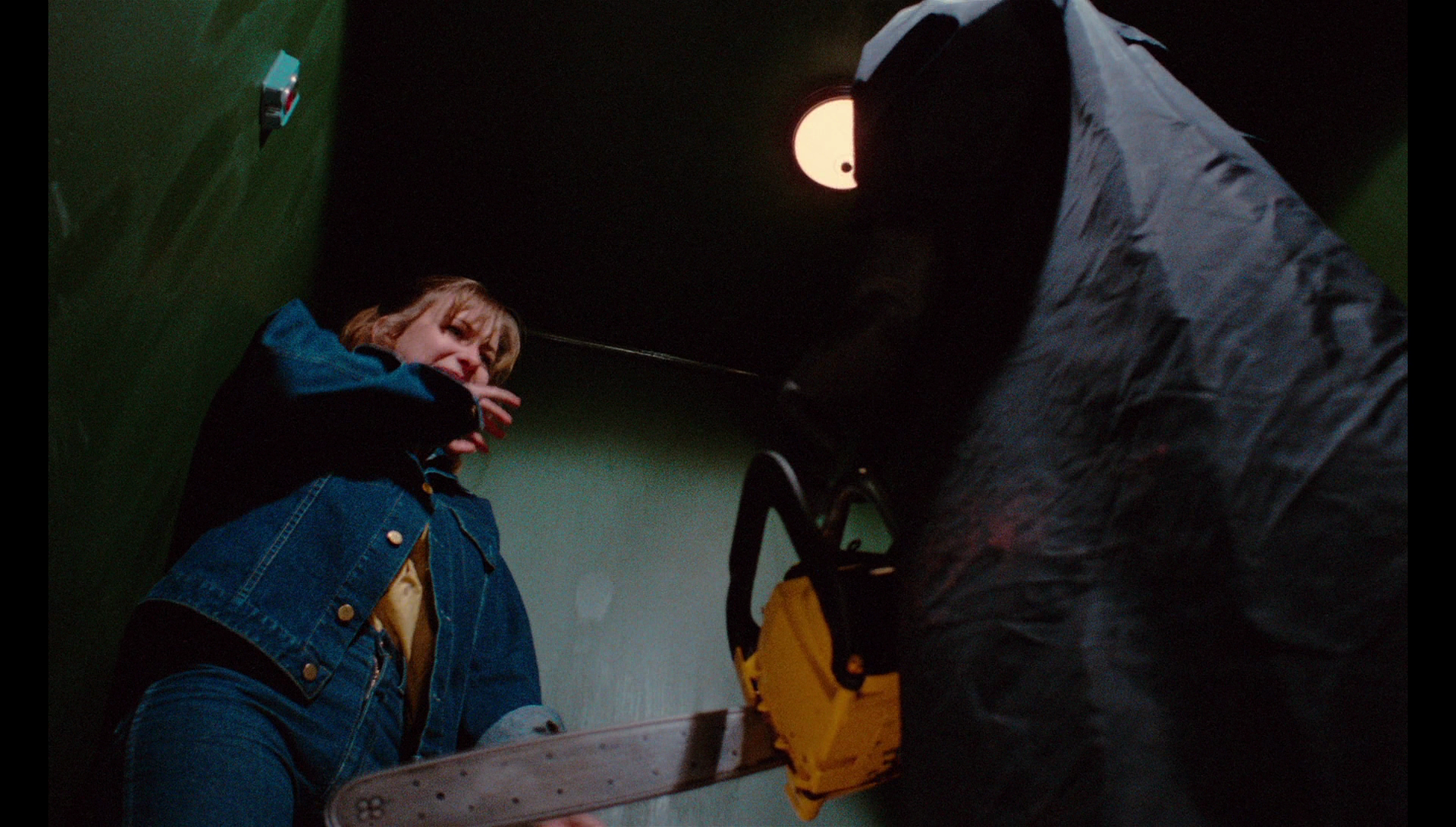 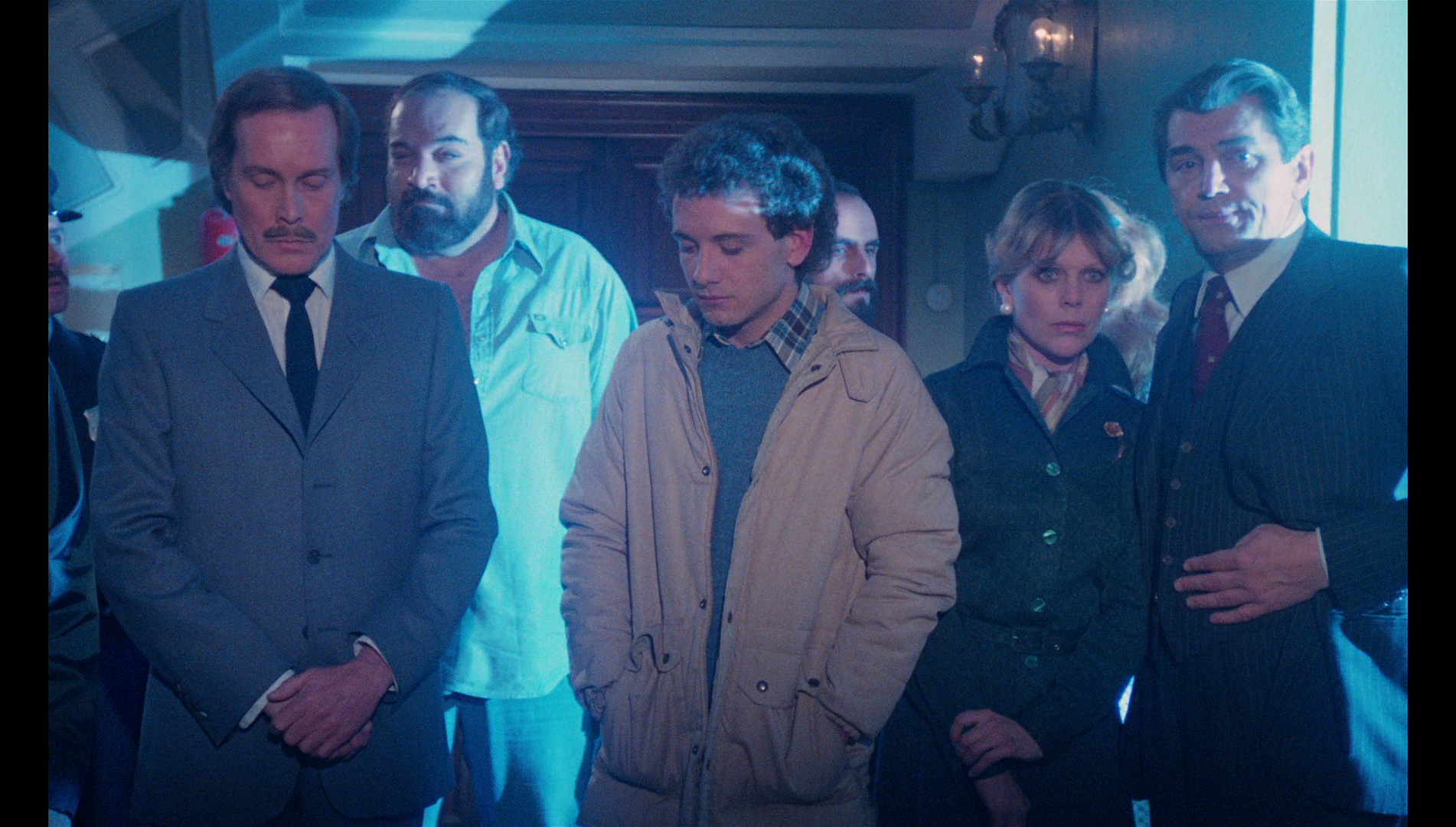 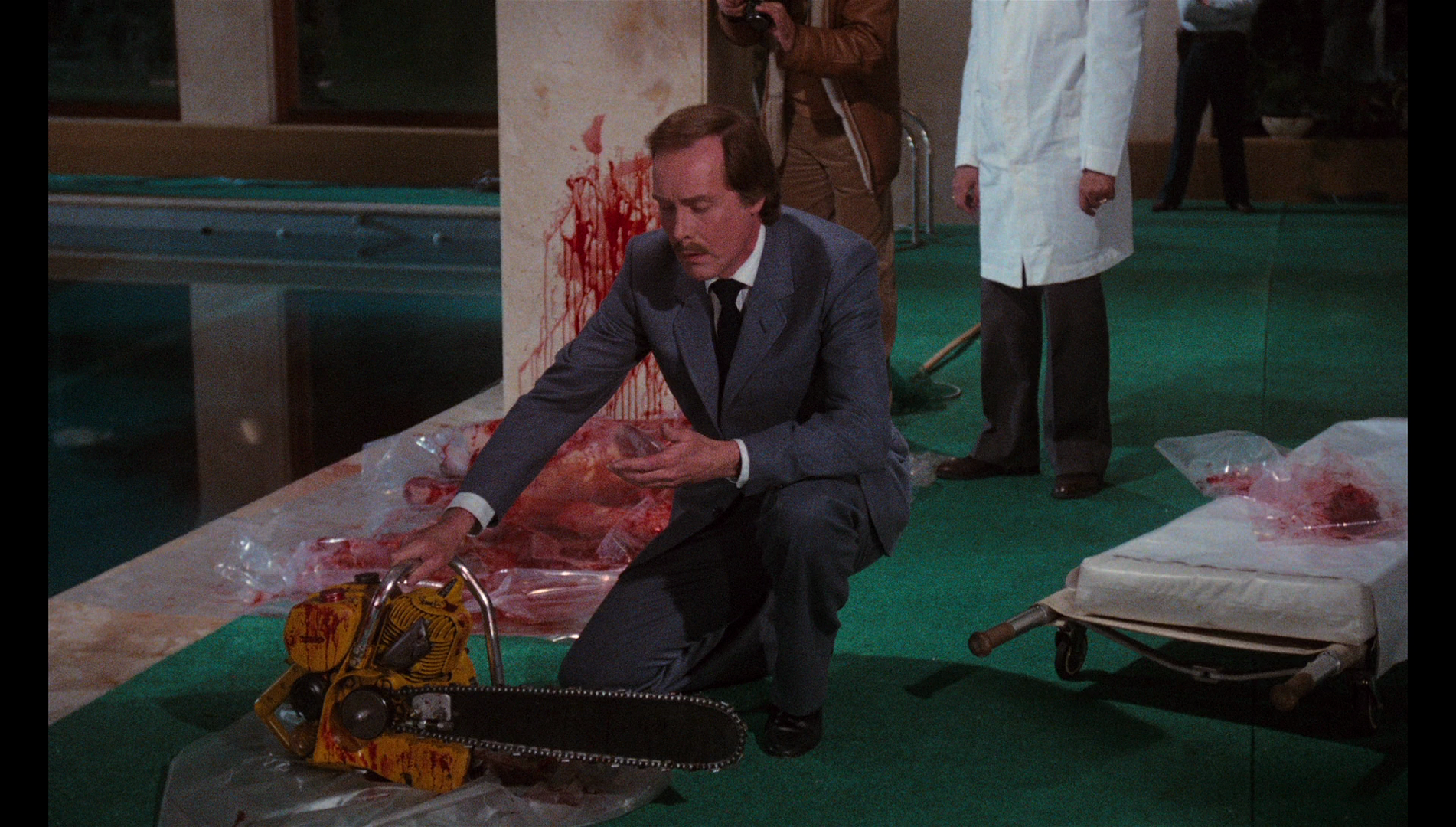
Video
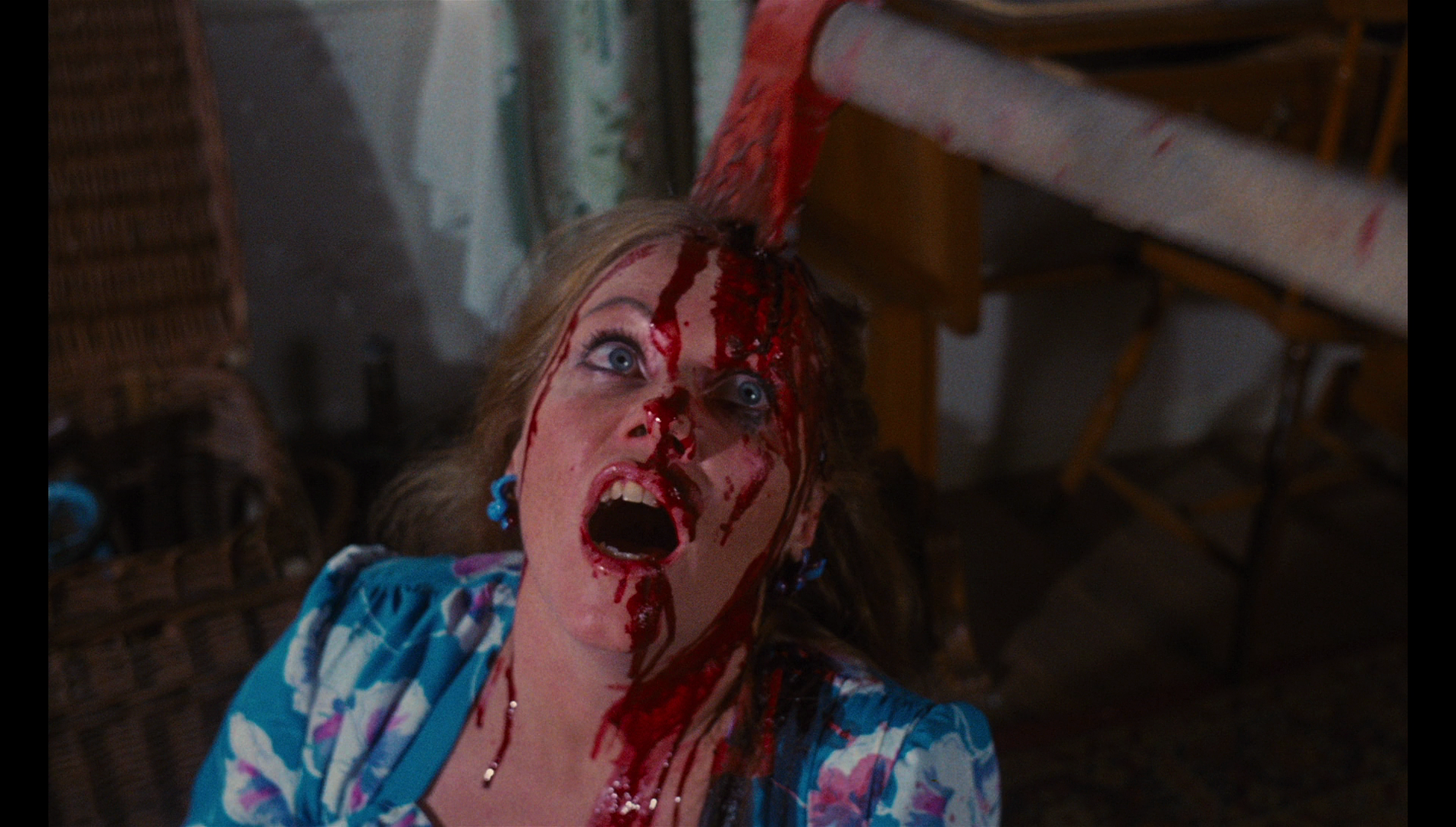 Like Grindhouse’s American Blu-ray release of the same film last year (2016), Arrow’s new UK Blu-ray release of Pieces contains both the cut of the film released in Spain (as Mil gritos tiene la noche/‘A Thousand Cries in the Night’) and the cut of the film assembled for export and shown in cinemas in the US in 1983 (as Pieces) and distributed in English-speaking territories on home video. The differences between the two edits are fairly small: the Spanish version features different titles (plain white text on a black background) and intercuts the credits with the film’s opening sequence (in the manner of, say Dario Argento’s Profondo rosso/Deep Red, 1975), whereas the US version features the titles sequence playing out in its entirety, the credits being presented in blood red font and alongside the image of a large knife, following the film’s opening sequence. The Spanish version features a small handful of shots that run very slightly longer, most notably the shots interspersed throughout the narrative of the killer assembling the blood-spattered jigsaw puzzle. The first conversation between the Dean and Mary Riggs has a couple of extra lines of dialogue in the Spanish cut, there’s a slight extension of the aftermath to the moment in which the kung fu instructor ‘attacks’ Mary, and Sgt Holden is shown talking on the telephone a little longer as the film builds towards its climax. The Spanish cut of the film runs for 86:45 mins, whereas the US cut runs for 85:27 mins. Like Grindhouse’s American Blu-ray release of the same film last year (2016), Arrow’s new UK Blu-ray release of Pieces contains both the cut of the film released in Spain (as Mil gritos tiene la noche/‘A Thousand Cries in the Night’) and the cut of the film assembled for export and shown in cinemas in the US in 1983 (as Pieces) and distributed in English-speaking territories on home video. The differences between the two edits are fairly small: the Spanish version features different titles (plain white text on a black background) and intercuts the credits with the film’s opening sequence (in the manner of, say Dario Argento’s Profondo rosso/Deep Red, 1975), whereas the US version features the titles sequence playing out in its entirety, the credits being presented in blood red font and alongside the image of a large knife, following the film’s opening sequence. The Spanish version features a small handful of shots that run very slightly longer, most notably the shots interspersed throughout the narrative of the killer assembling the blood-spattered jigsaw puzzle. The first conversation between the Dean and Mary Riggs has a couple of extra lines of dialogue in the Spanish cut, there’s a slight extension of the aftermath to the moment in which the kung fu instructor ‘attacks’ Mary, and Sgt Holden is shown talking on the telephone a little longer as the film builds towards its climax. The Spanish cut of the film runs for 86:45 mins, whereas the US cut runs for 85:27 mins.
The two versions of the film are presented via separate encodes on the same Blu-ray disc. The Spanish cut takes up just under 18Gb of space on the disc; the US cut takes up just over 22Gb. Both versions of the film are presented in the film’s intended aspect ratio of 1.66:1, the 1080p presentations using the AVC codec. 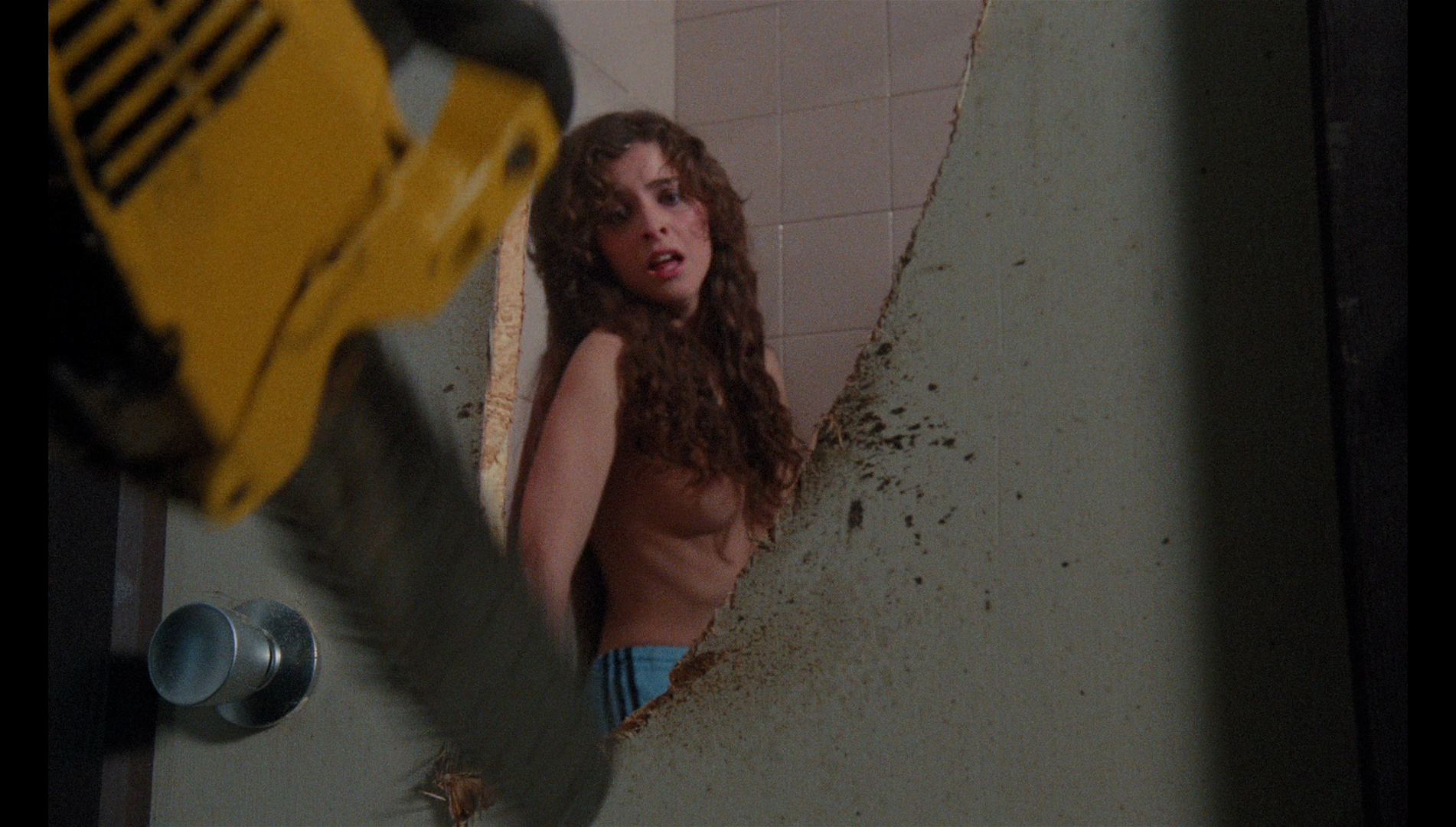 The presentation is based on a new 4k transfer from the film’s 35mm negative. Colour reproduction is good throughout, with skintones looking natural and the film’s expressive use of colour during the murder sequences (steely blues offset by vibrant reds) being communicated effectively. There is a good level of detail present throughout the presentation/s. Quite a few sequences feature diffused light, and these moments are handled very well here; the use of diffused light generates a softness to the edges of objects within the frame, which is a characteristic of the original photography rather than a ‘fault’ of this presentation. Contrast levels are excellent, especially given how many of the film’s key sequences take place in low light situations and feature the shadow of the killer ominously moving towards his prey. Defined midtones are balanced by deep blacks. Encodes on both cuts of the film are strong, enabling the presentation to retain the structure of 35mm film. The presentation is based on a new 4k transfer from the film’s 35mm negative. Colour reproduction is good throughout, with skintones looking natural and the film’s expressive use of colour during the murder sequences (steely blues offset by vibrant reds) being communicated effectively. There is a good level of detail present throughout the presentation/s. Quite a few sequences feature diffused light, and these moments are handled very well here; the use of diffused light generates a softness to the edges of objects within the frame, which is a characteristic of the original photography rather than a ‘fault’ of this presentation. Contrast levels are excellent, especially given how many of the film’s key sequences take place in low light situations and feature the shadow of the killer ominously moving towards his prey. Defined midtones are balanced by deep blacks. Encodes on both cuts of the film are strong, enabling the presentation to retain the structure of 35mm film.
Some larger screen grabs are included at the bottom of this review, comparing the presentation of the Spanish cut with that of the English language export cut (both seem near-identical, regardless of the different file sizes), and comparing Arrow Video’s new Blu-ray release with the presentation of the film on the Blu-ray release from Grindhouse in the US. 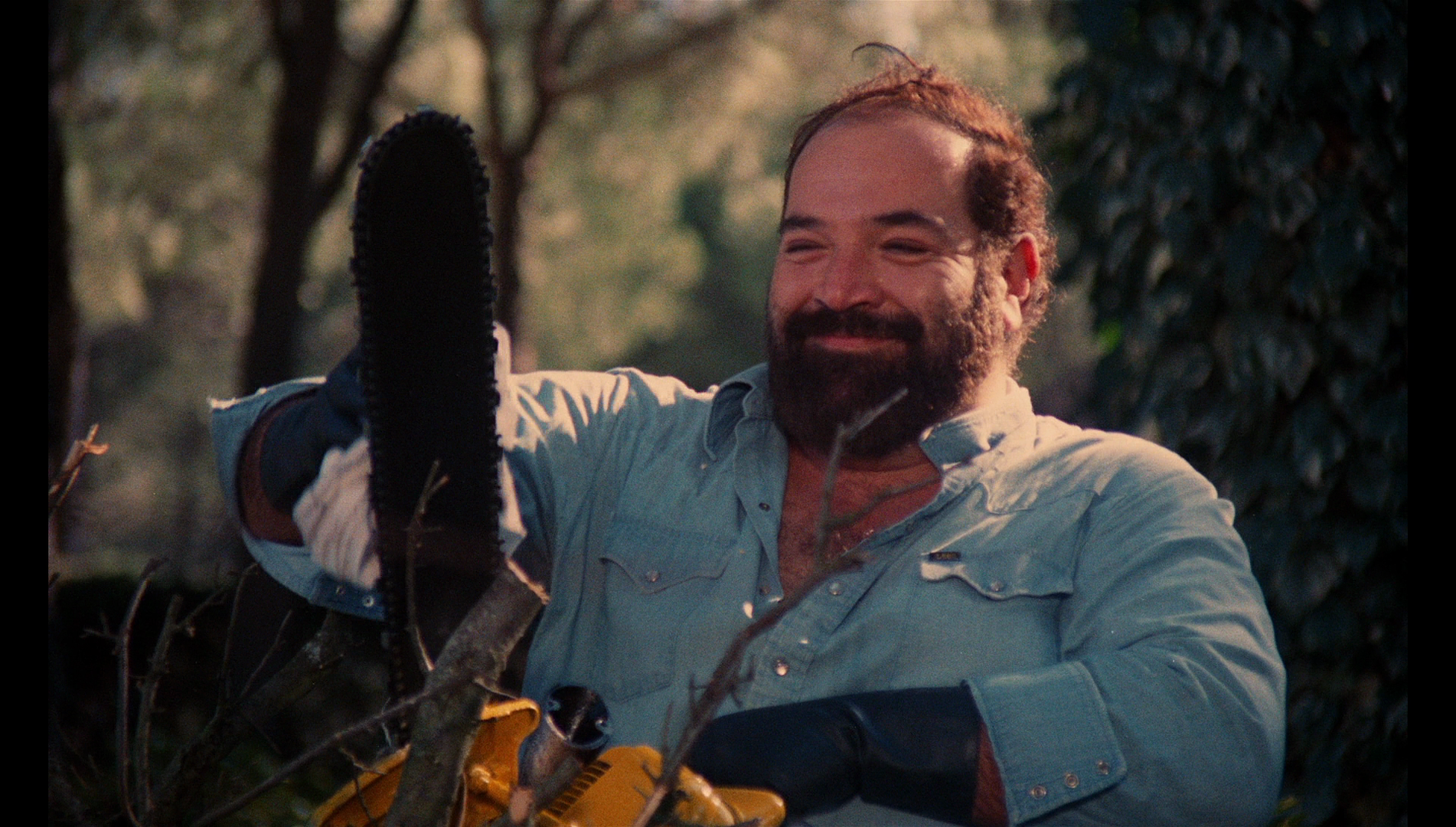 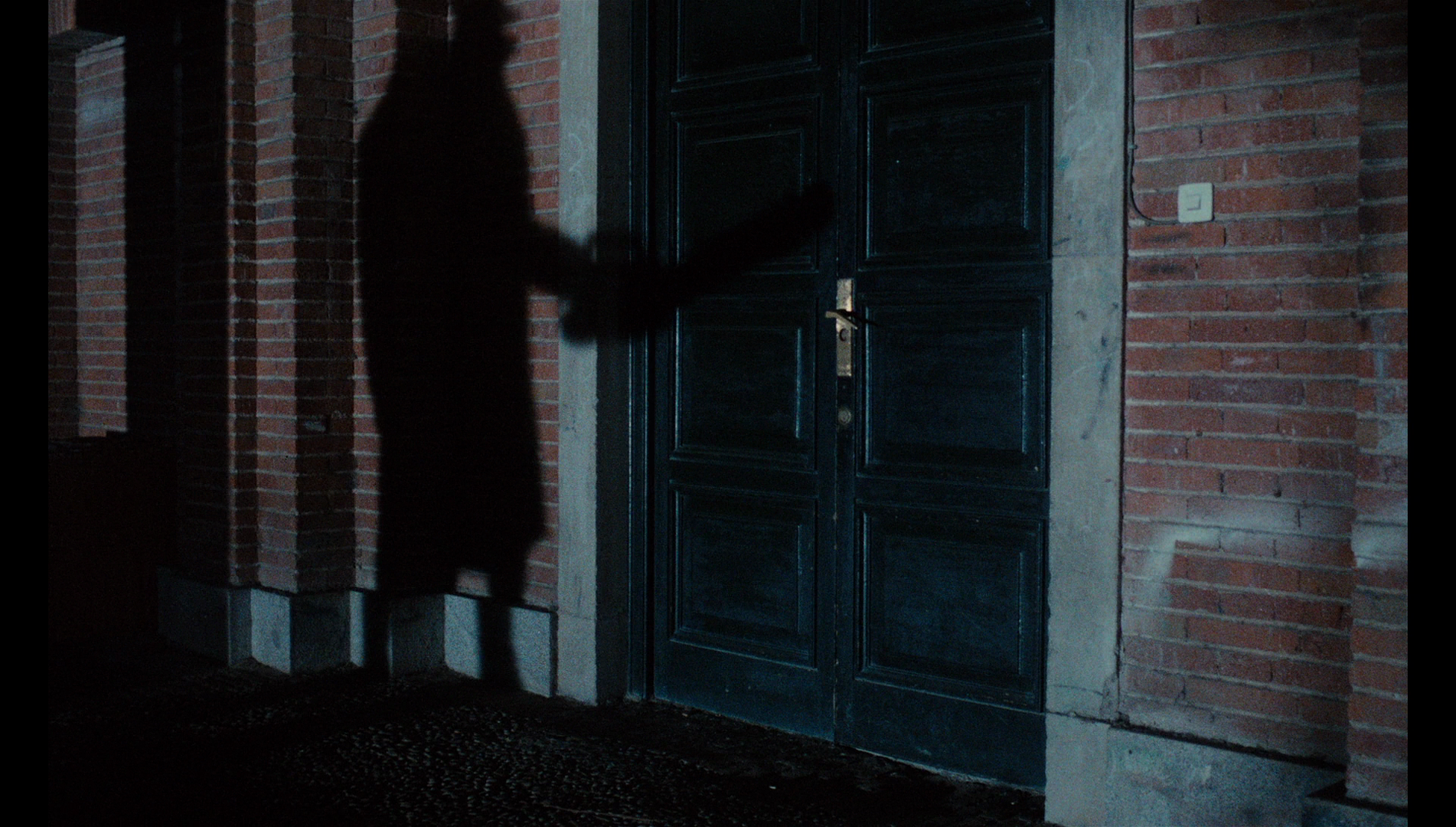 
Audio
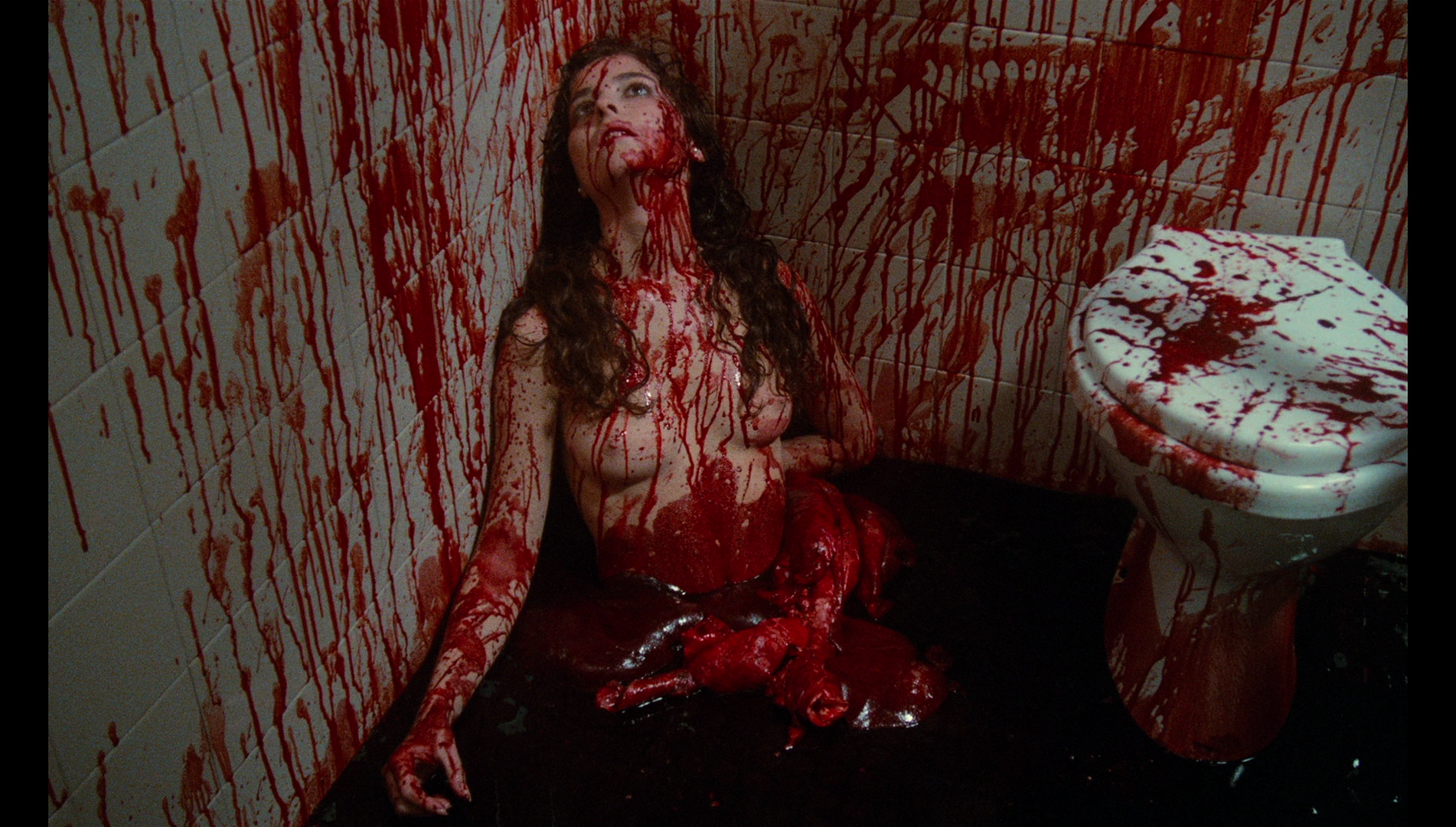 The Spanish cut is presented in Spanish (LPCM 1.0), with optional English subtitles. The Spanish cut is presented in Spanish (LPCM 1.0), with optional English subtitles.
The US cut, on the other hand, has two audio/subtitle options: (1) the English-language audio track (also in LPCM 1.0) accompanied by optional English HoH subtitles, or (2) a Spanish-language track (again in LPCM 1.0) with optional English subtitles which are a translation of the Spanish dialogue. Most viewers watching the US cut will default to the infamously bizarre English-language track – most recognisable to the film’s fans for its absurdities. The Spanish track has a very different musical score to the US version: where the Spanish version’s score is a largely piano-based classical composition by Librado Pastor, the US version features a synth score from the Italian CAM (Creazioni Artistiche Musicali) music library, with much of the score of the US version taken from the music composed by Carlo Mario Cordio for Joe D’Amato’s Rosso sangue (Absurd, 1981) and Stelvio Cipriani’s music for Un’ombra nell’ombro (Ring of Darkness, Pier Carpi, 1979).
Extras
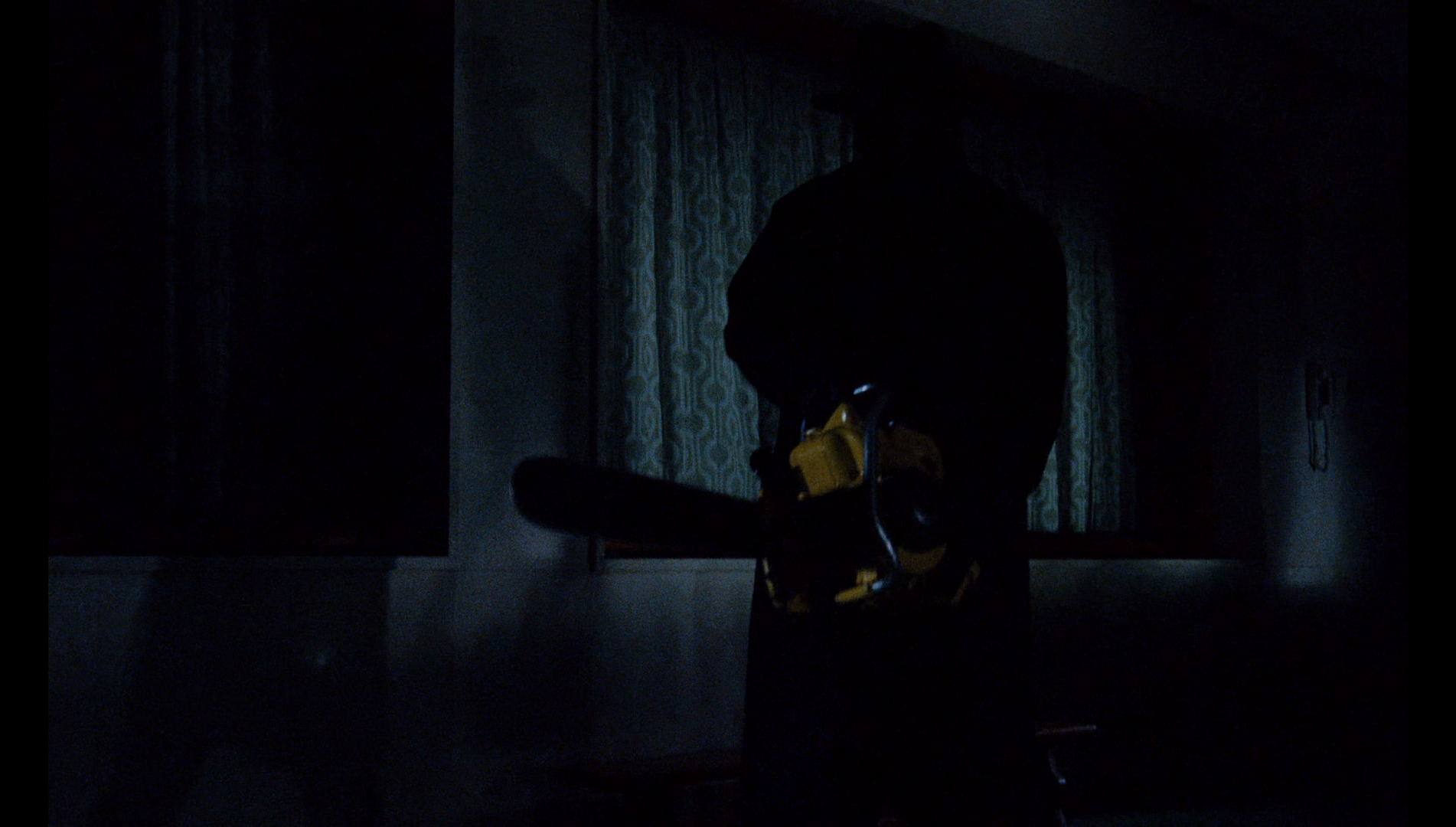 The disc includes: The disc includes:
- An audio commentary with The Hysteria Continues. Recorded for Arrow’s new Blu-ray release, this is an excellent commentary, like all of those on which the trans-Atlantic podcast troupe appear. The commentators talk enthusiastically about Pieces, reflecting on their respective first encounters with the film via its various VHS releases in the US and the UK. They reflect on Juan Piquer Simòn’s other films, including the Shaun Hutson adaptation Slugs (1988, also released by Arrow Video and reviewed by us here); the unanimous verdict on that film is the same as the general consensus – it’s both disgusting and bizarre. They discuss the casting, particularly the casting of Christopher George and his wife Lynda Day George. (Christopher George’s nude photoshoot for a 1974 issue of Playgirl is also mentioned.) The commentators emphasise the film’s similarities to American bodycount/slasher films (the focus of their podcasts) whilst also acknowledging its allusions to the thrilling all’italiana pictures/Italian-style thrillers like those of Dario Argento. - Isolated audio track: music rescore by Umberto. In 2012, electronic musician Matt Hill performed music to accompany a screening of Pieces at the Glasgow Film Festival. Hill’s music was released on CD by Rock Action the same year. Hill’s ‘new’ score for the film is presented here, as a music-only experience accompanying the main feature. Hill’s score shows a familiarity with the paradigms of the scores for Italian horror films of the period, the music often demonstrating the influence of Fabio Frizzi in particular (and, notably, Frizzi’s score for Fulci’s Paura nella città dei morti viventi/City of the Living Dead, 1980). - Vine Theater Experience (Dolby Digital 5.1). Recorded at a screening of Pieces at the Vine Theater in Hollywood in 2002, this is essentially a track along the lines of the ‘Audience Partici… pation’ audiotapes that used to circulate amongst fans of The Rocky Horror Picture Show (Jim Sharman, 1975), with a rowdy and presumably quite tipsy crowd interacting with the film – laughing and firing back one liners at the screen. Your appreciation of/tolerance for this will depend on your feelings regarding such tracks. 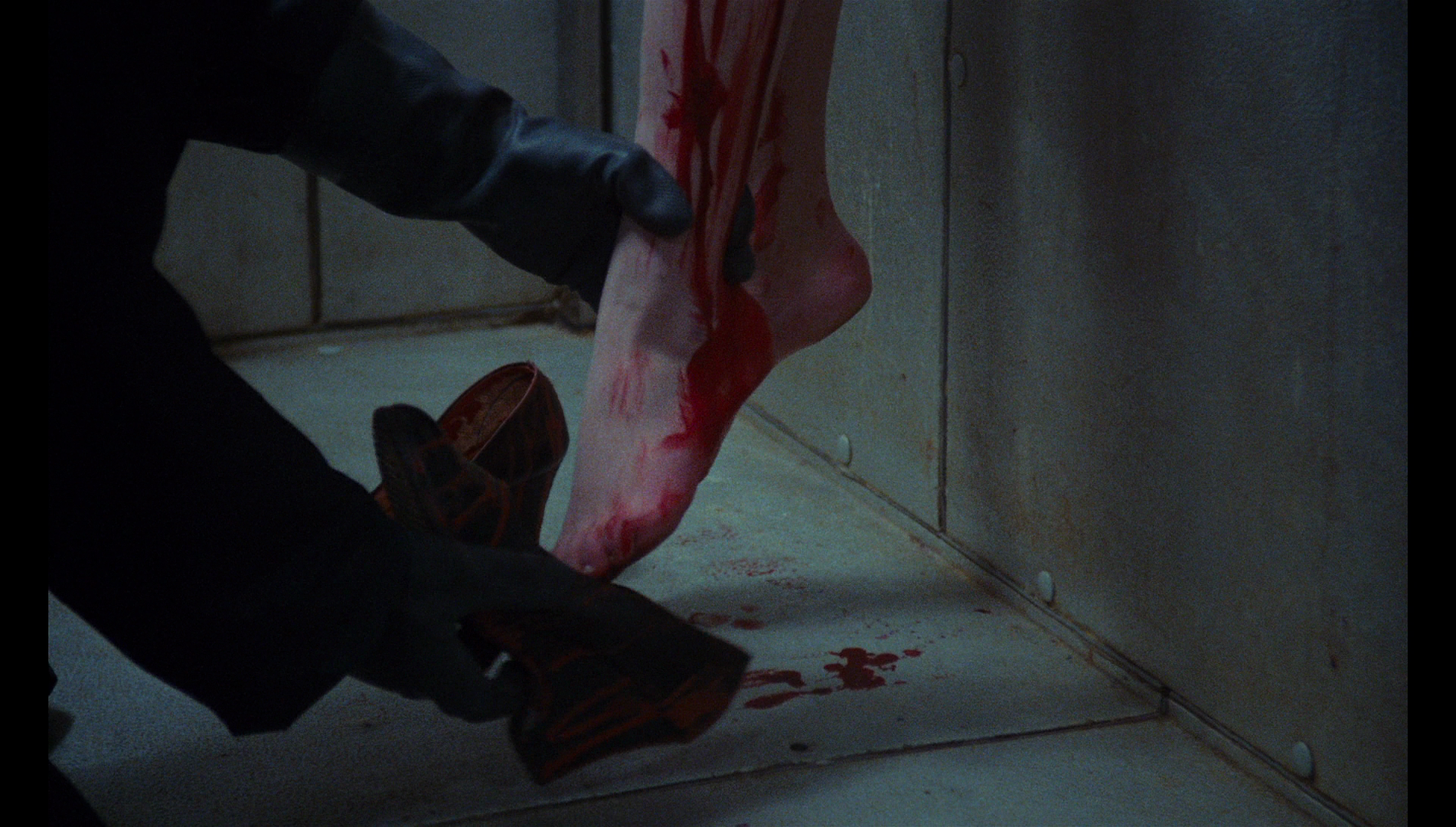
- ‘It’s Exactly What You Think It Is!’ (15:03). In a new featurette, Nicholas McCarthy (the director of The Pact, 2012), Adrian Garcia Bogliano (director of Late Phases, 2014), Mike Mendez (director of Big Ass Spider, 2013), and critics Joe Bob Briggs and Nathaniel Thompson (of the excellent ‘Mondo Digital’ website) all reflect on Pieces. Joe Bob Briggs suggests that the film wasn’t particularly memorable upon its first release because so many ‘better’ films were released in the same year, but the picture achieved a stronger cult following later via its exposure on home video. He argues that Pieces is ‘a genuine cult film’. The filmmakers, particularly Bogliano, reflect on Simòn’s approach to filmmaking; and Simòn’s work is contextualised within the cultural fallout of the death of Franco and the ensuant relaxation of film censorship in Spain. - ‘A Thousand Screams’ (28:14). The film’s art director Gonzalo Gonzalo is interviewed. The interview is in Spanish, with optional English subtitles. Gonzalo reflects on his association with Simòn and his long-standing collaboration with Simòn, talking about their first meeting and some of the effects Gonzalo realised for Simòn’s films. - ‘Falling to Pieces’ (8:51). Here, in another interview, Sergio Blasco talks about his association with Simòn which began in 2001, at a festival where Blasco was being given a prize. Blasco and Simòn planned a sequel together which was never realised, and Blasco reveals the plans for this sequel in this interview. This interview is also in Spanish, with burnt-in English subtitles. 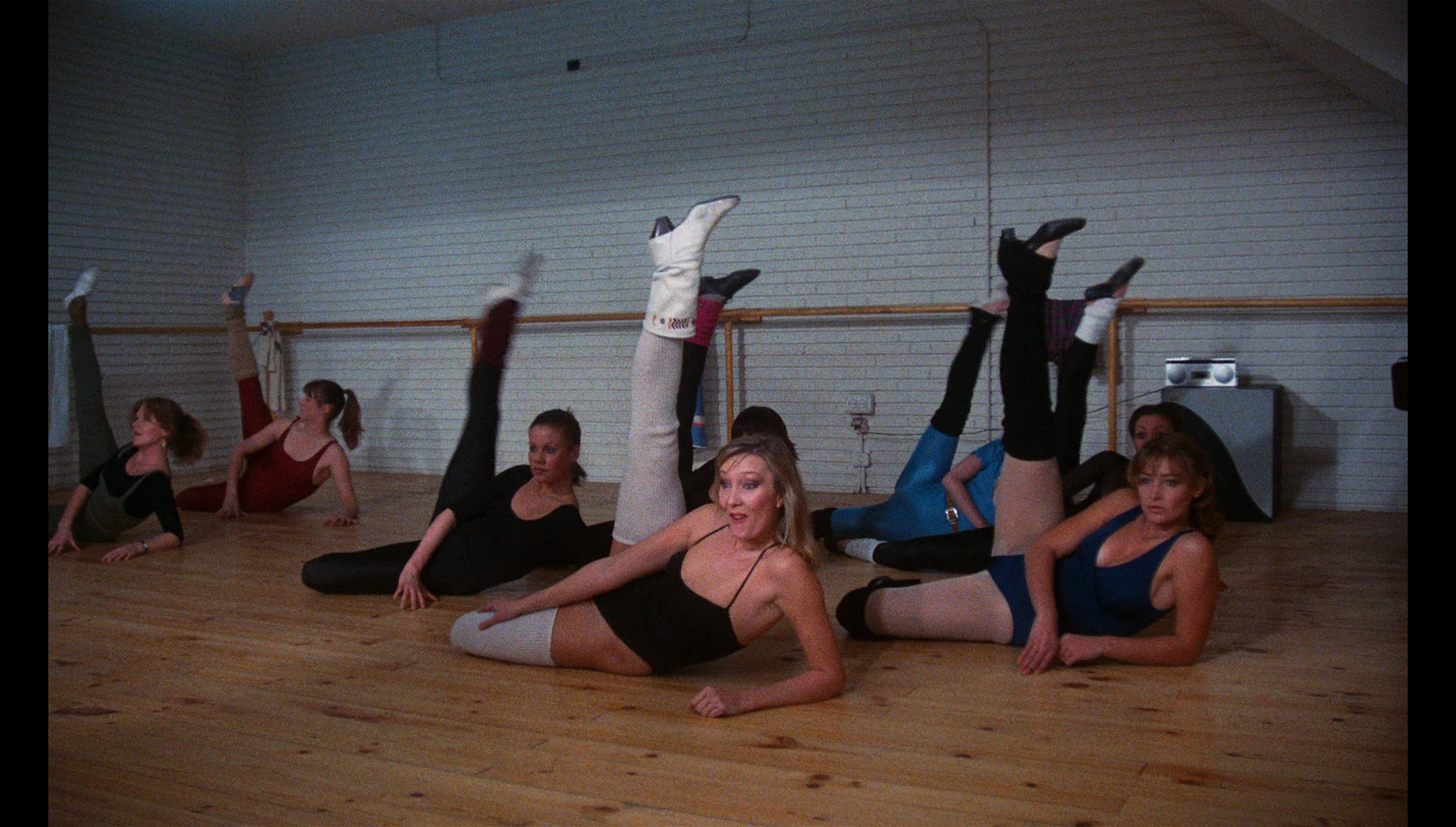
- ‘Pieces of Piquer’ (55:28). This detailed archival interview with Simòn covers the director’s career. Simòn talks about his approach to directing, his feelings regarding the use of special effects and his philosophy to publicity. He comments in detail on Pieces and talks in particular about the differences in terms of the scores for the US and Spanish version; Simòn reveals a distaste for the music used in the US version of the film, though he states that he has never seen the American edit of the picture in its entirety. He discusses the critical response to Pieces and its growing cult following. The interview is in Spanish, with burnt-in English subtitles. - ‘Paul Smith: The Reddest Herring’ (57:45). Paul L Smith is interviewed in an archival piece from 2007. Smith talks about his early career as an actor, and he reflects on some of the films in which he appeared, including Alan Parker’s Midnight Express (1978) and Sam Raimi’s Crimewave (1986). - Steve Minasian Interview (2:58). Pieces’s producer offers comments in an audio interview, reflecting on the distribution of the film and how the filmmakers were ‘screw[ed] really good’ by the distributors. - Trailers: Theatrical Trailer (0:31); 2016 Re-release Trailer (0:40). - Galleries: o Production Stills (18 images). Strangely, these production stills mostly consist of posed ‘cheesecake’ photographs of the actresses nude (perhaps they were shots intended for use on the jigsaw puzzle, plus a couple of shots of special effects techniques. o Publicity Materials (20 images). This gallery contains posters and lobby cards from the film’s original cinema releases in Spain and the US. o Video Releases (37 images). This is a gallery of video artwork. o Bits and Pieces (58 images). This gallery contains miscellaneous images. o Juan Piquer’s Still Show (8:02). Simòn is shown speaking about various promotional artwork, including stills. He comments on a shot of the dancers in the dance studio, stating that the original intention was to have these dancers naked – but the performers wouldn’t submit to it. He produces the image used for the jigsaw puzzle and reflects on how this was made; and he also shows the box office returns for the film, discussing Pieces’s popularity. Simòn speaks in Spanish, with burnt-in English subtitles. The package includes a soundtrack CD containing 16 tracks of the film’s original score. Retail copies include reversible sleeve artwork and a booklet containing new writing about the film by Michael Gingold.
Overall
 Pieces is an illogical, sleazy picture – but this is all part of its charm. The film’s bizarre approach to narrative and its emphasis on gore and nudity are the elements which have led to it acquiring a strong cult following in the years since its initial release. Wearing its influences on its sleeve, and offering a strange European appropriation of the archetypes of the American slasher film, Pieces is an entertaining film; certainly, the Spanish dialogue is a little less risible than the more familiar English language dialogue, and the score in the Spanish version works much better than the library music used for the English language export cut. However, Arrow’s new release happily provides the viewer with multiple ways of watching the film. (The inclusion of the arguably superior Spanish language track on both cuts of the film is an obvious way in which this new release from Arrow excels over the American Blu-ray release from Grindhouse.) Pieces is an illogical, sleazy picture – but this is all part of its charm. The film’s bizarre approach to narrative and its emphasis on gore and nudity are the elements which have led to it acquiring a strong cult following in the years since its initial release. Wearing its influences on its sleeve, and offering a strange European appropriation of the archetypes of the American slasher film, Pieces is an entertaining film; certainly, the Spanish dialogue is a little less risible than the more familiar English language dialogue, and the score in the Spanish version works much better than the library music used for the English language export cut. However, Arrow’s new release happily provides the viewer with multiple ways of watching the film. (The inclusion of the arguably superior Spanish language track on both cuts of the film is an obvious way in which this new release from Arrow excels over the American Blu-ray release from Grindhouse.)
The pleasing presentation of the main feature is accompanied by some superb contextual material, much of it exclusive to this release. The commentary from The Hysteria Continues podcast troupe is superb (their commentary tracks are always a delight, in the view of this reviewer), and the video extras are excellent too – particularly the interview with Gonzalo and the ‘It’s Exactly What You Think It Is!’ featurette. UK fans of the film who haven’t imported the expensive Grindhouse release will find Arrow’s Blu-ray release of Pieces to be an essential purchase. Comparison of the presentations of the Spanish cut with the American cut (both from Arrow Video’s Blu-ray release): Spanish Cut 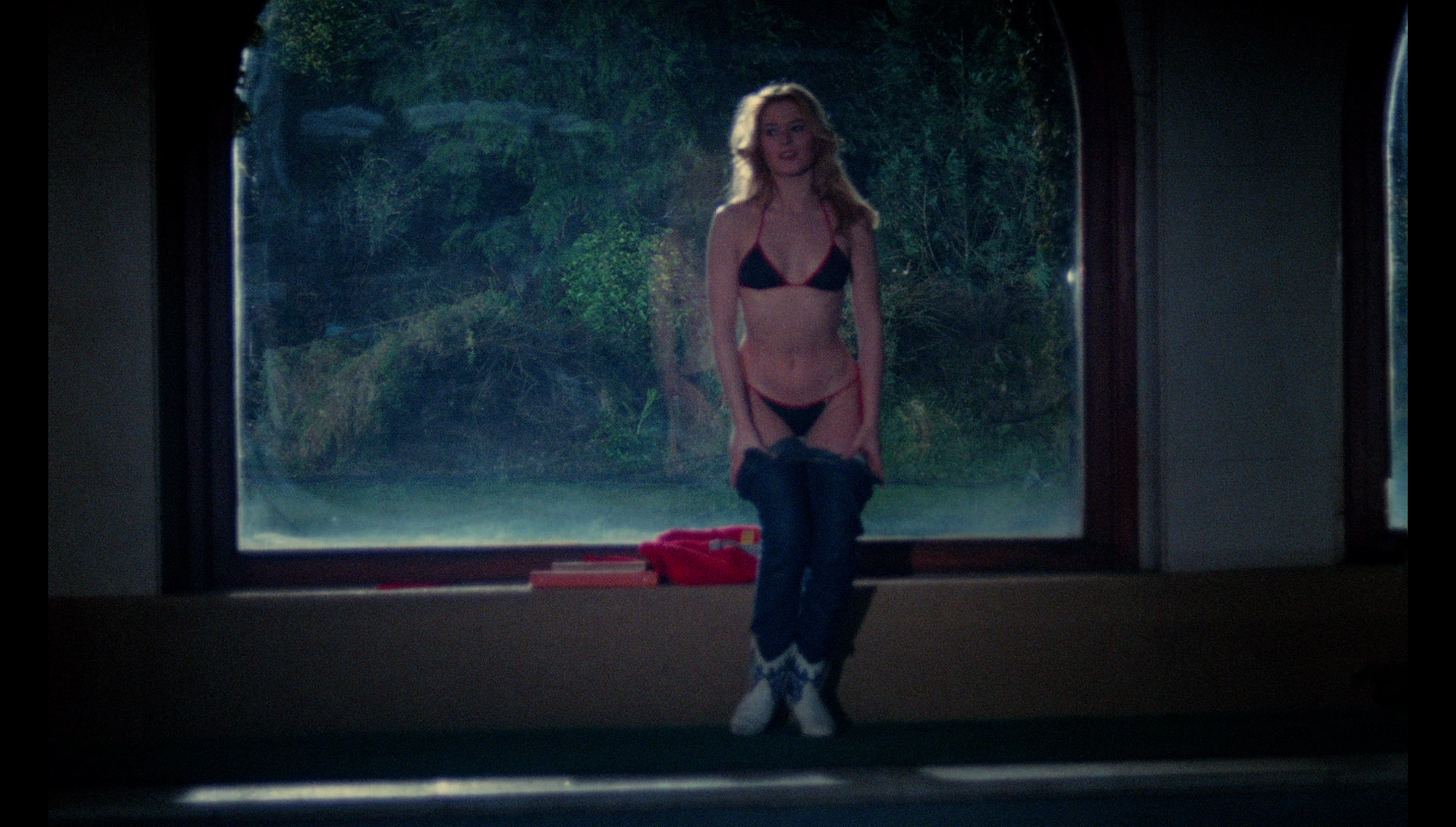
US Cut 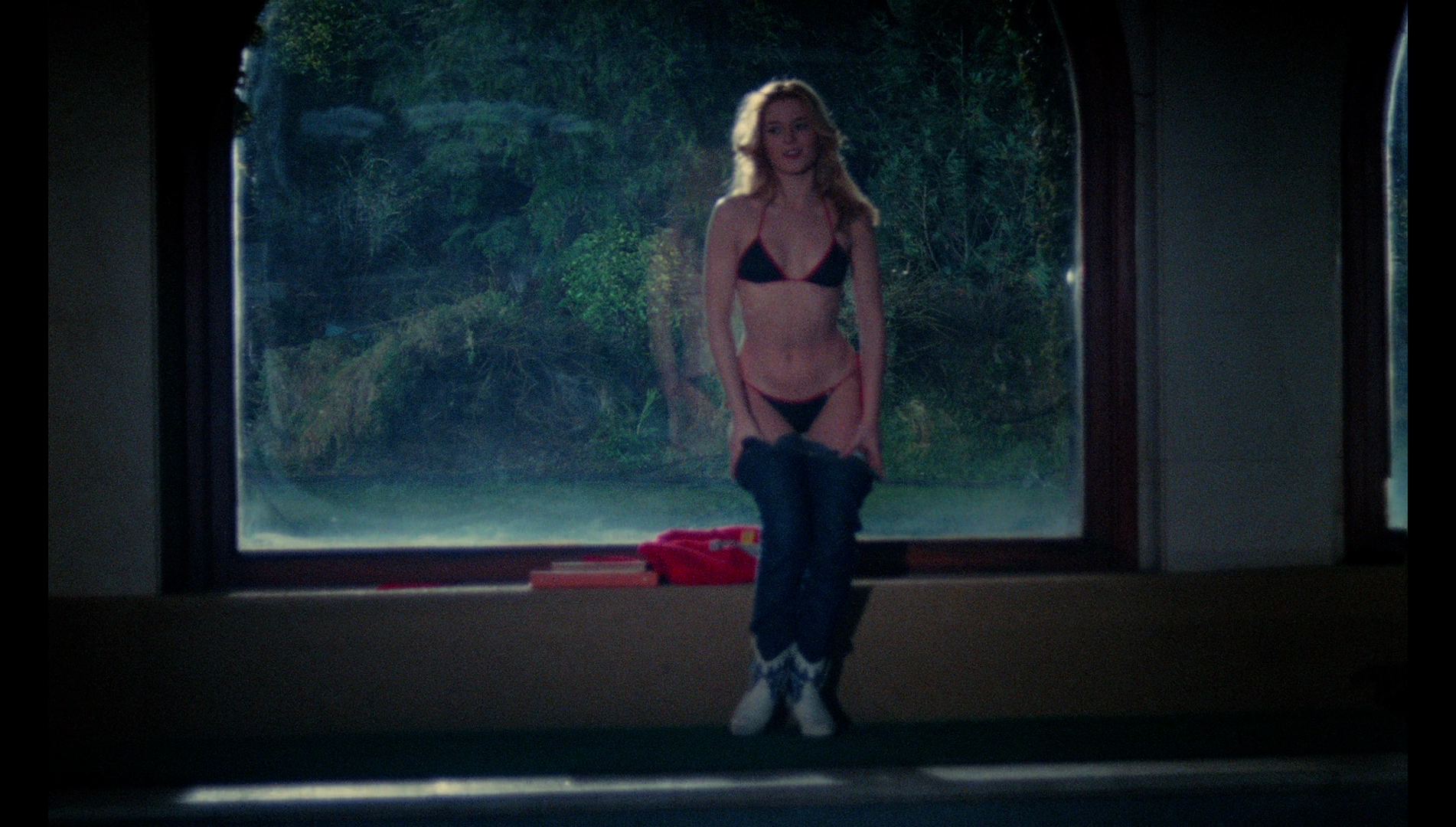
Spanish Cut 
US Cut 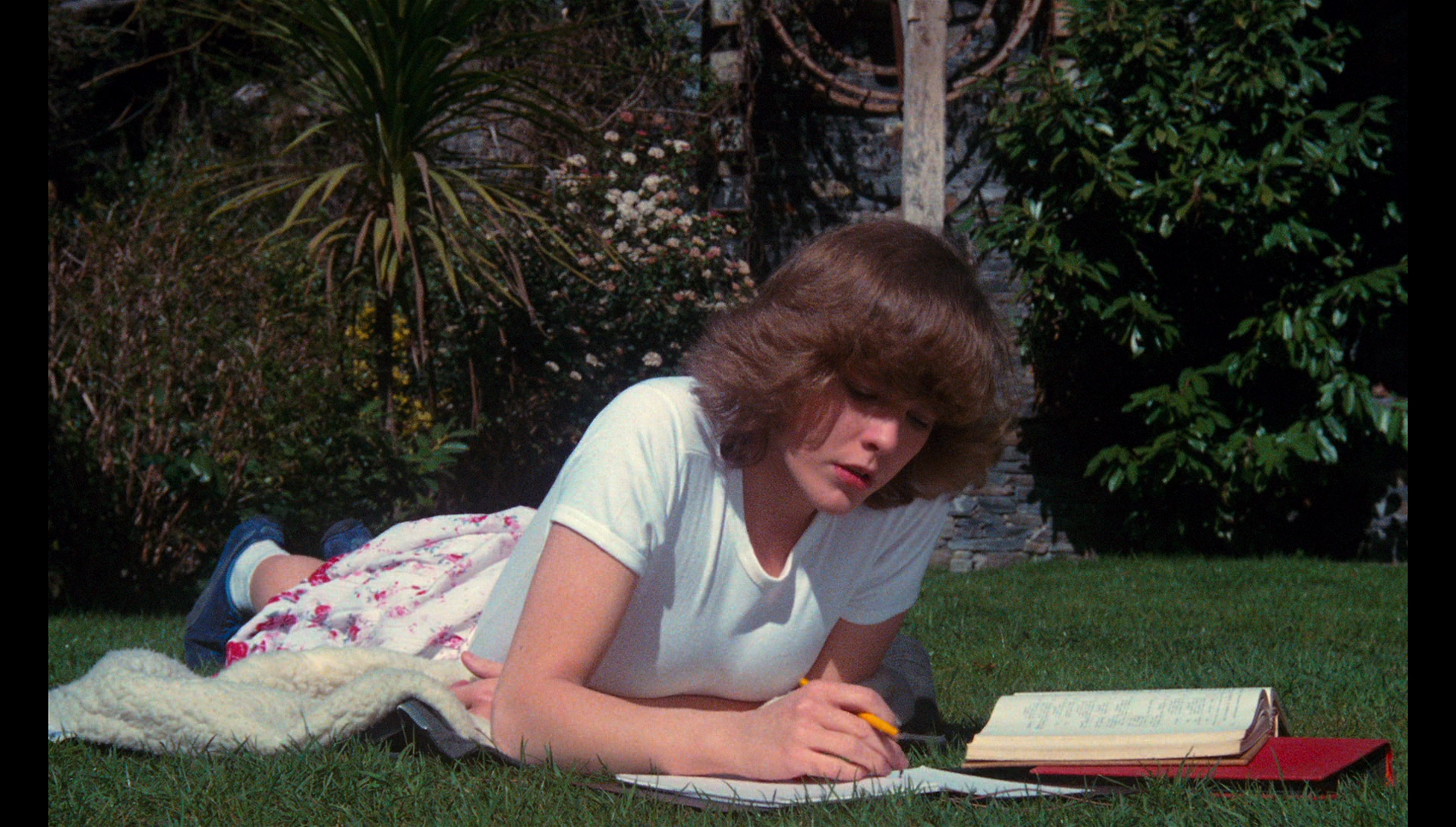
Comparison of Arrow Video’s presentation with the presentation from Grindhouse in the States: Arrow Video (Spanish Cut) 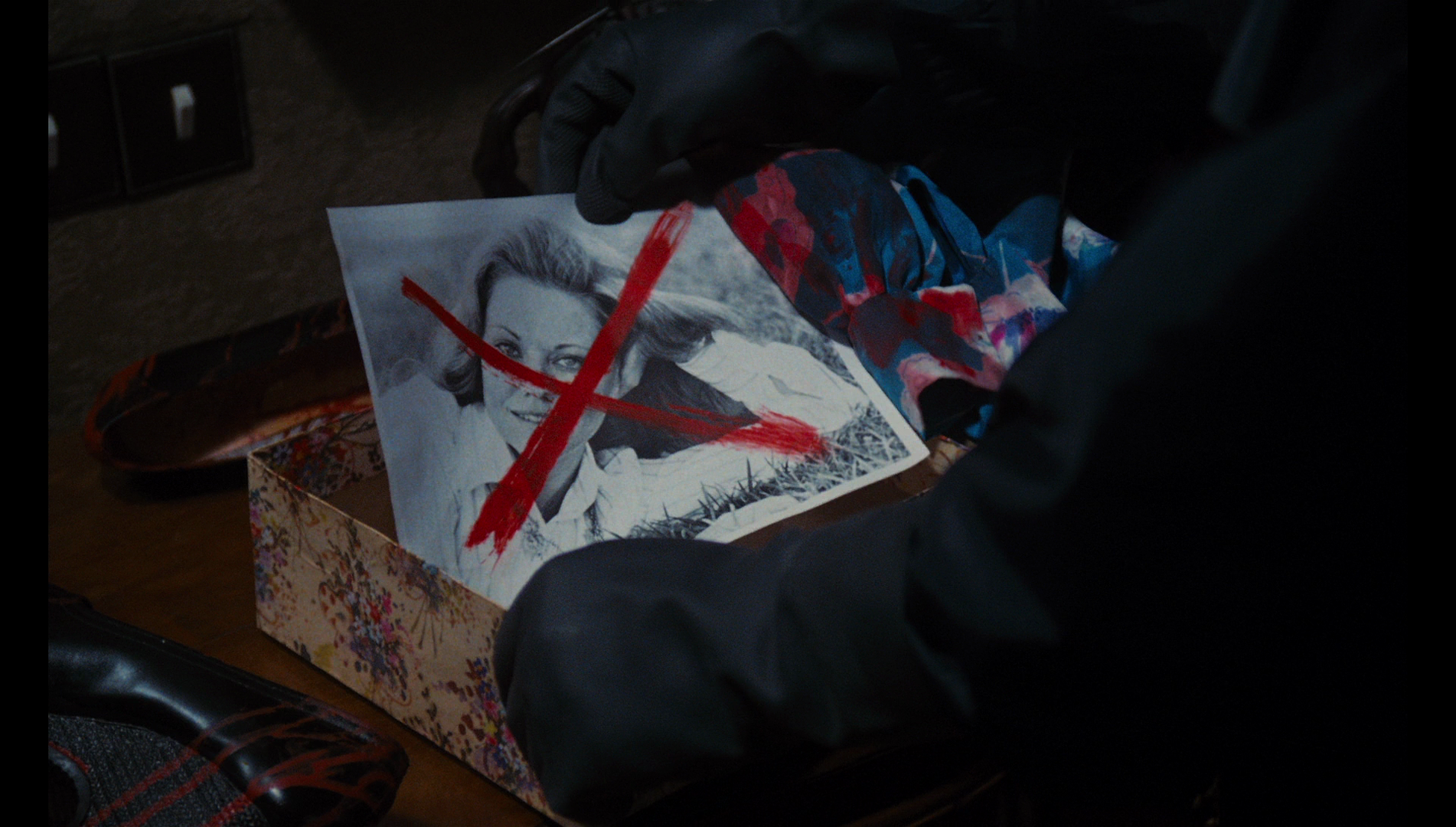
Arrow Video (US Cut) 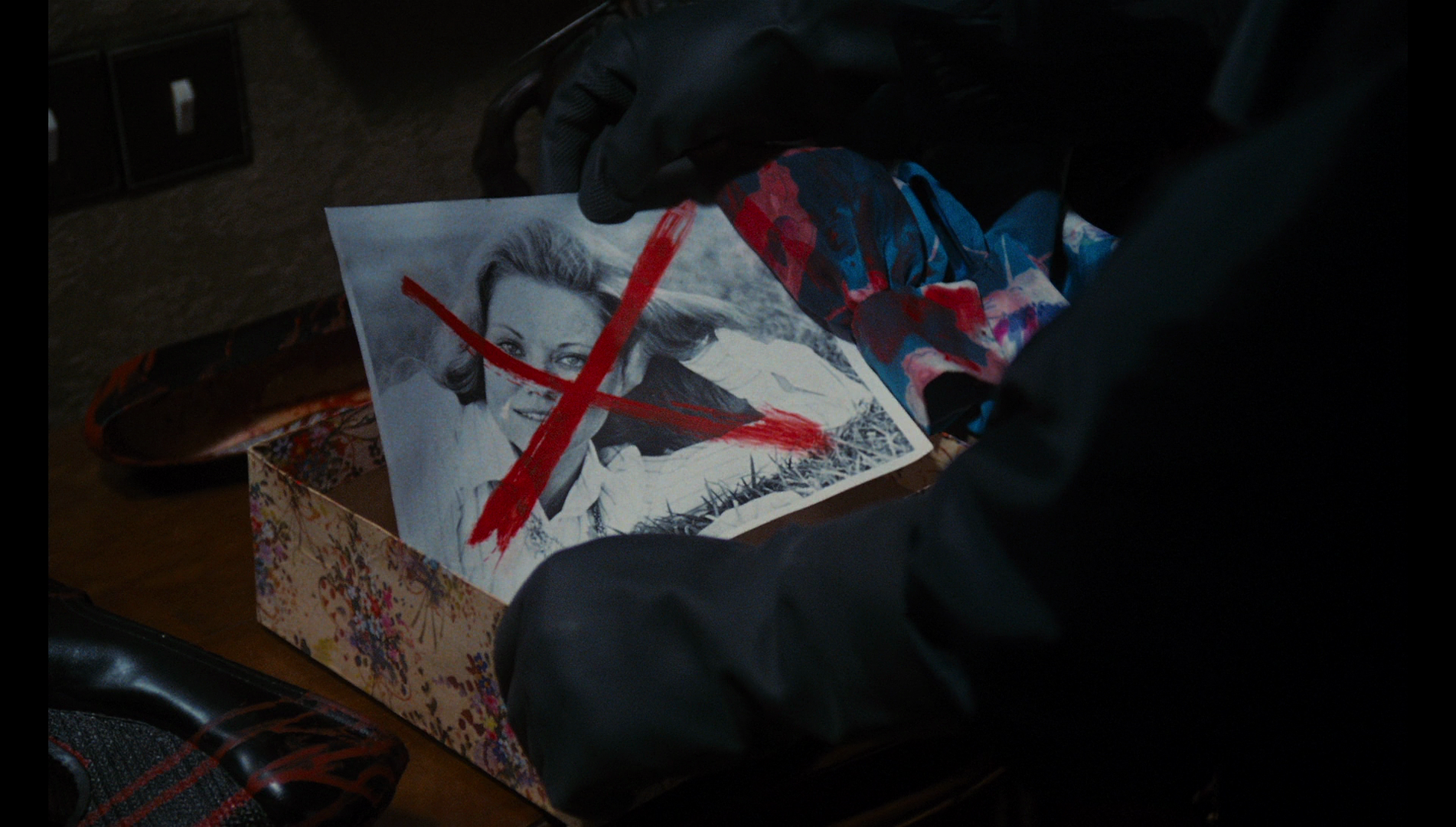
Grindhouse 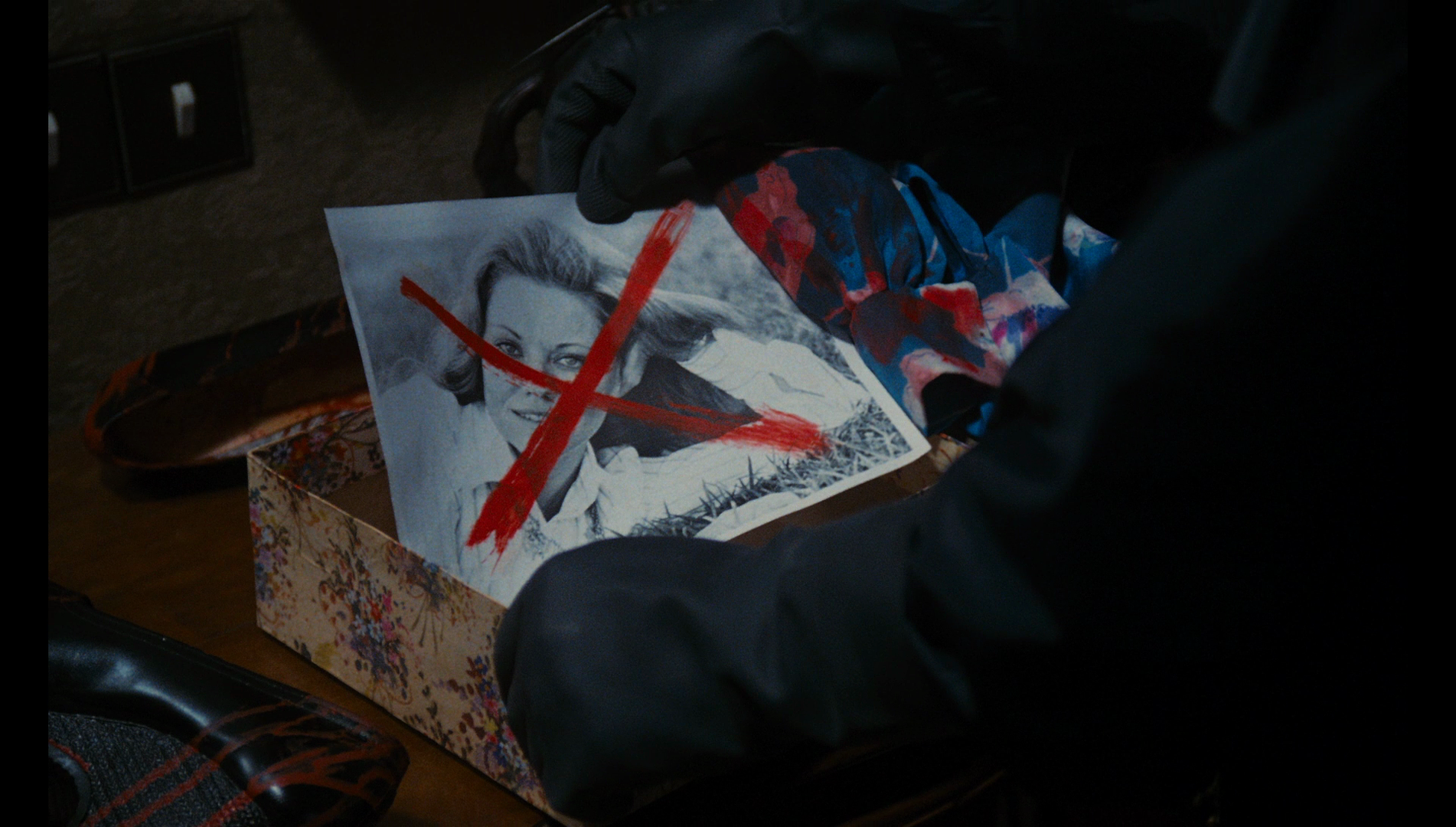
Grindhouse 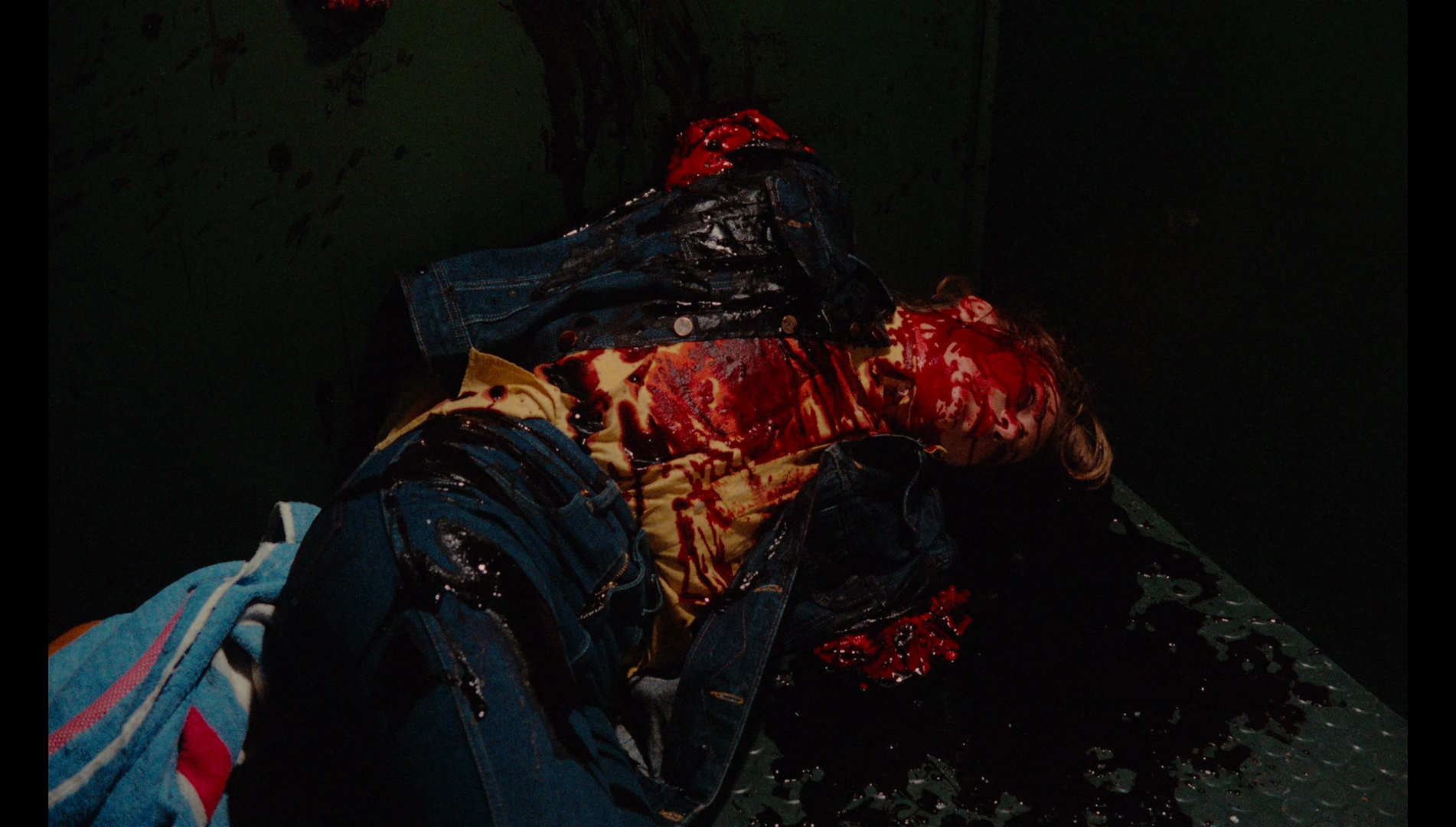
Arrow Video 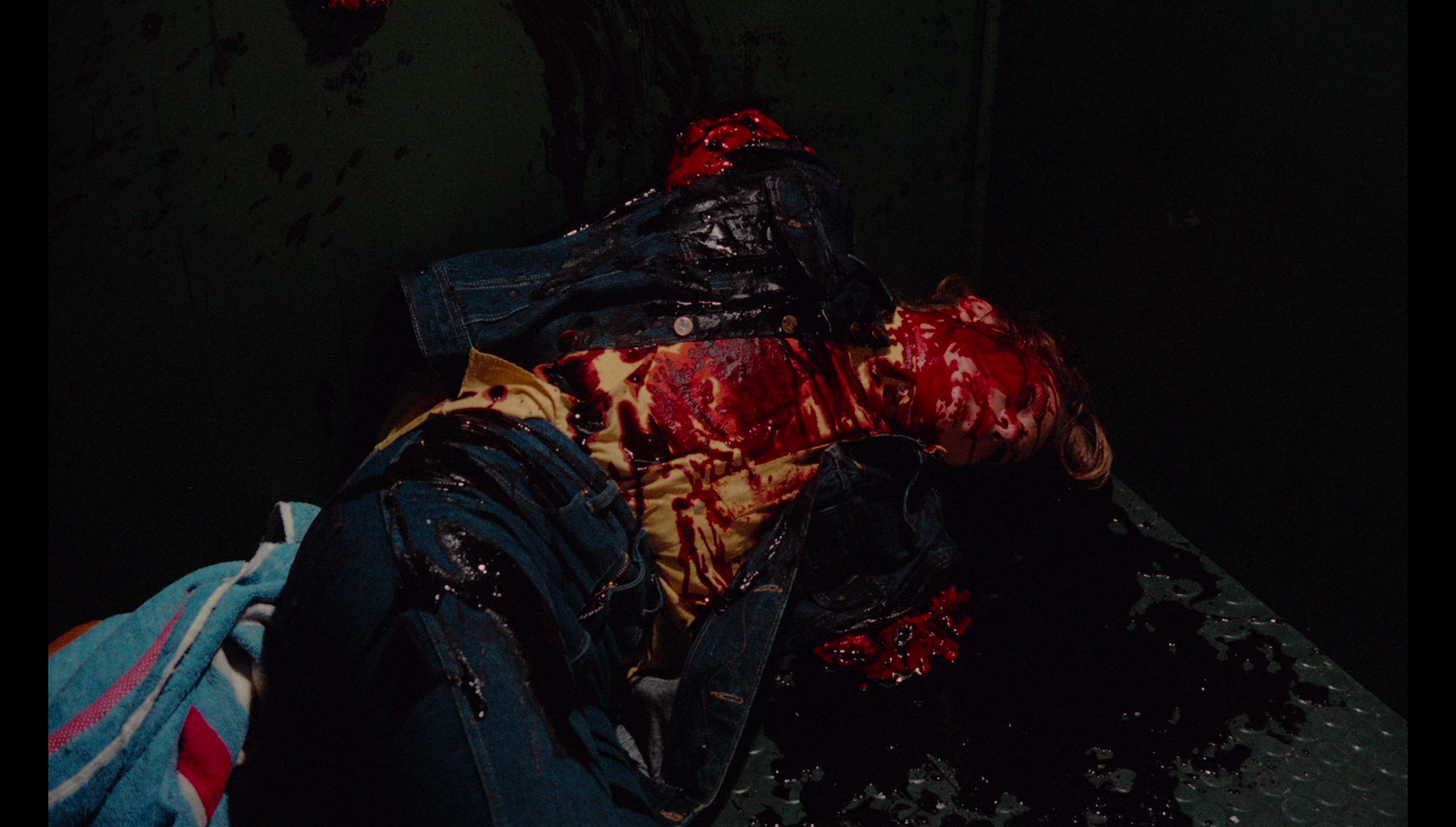
Grindhouse 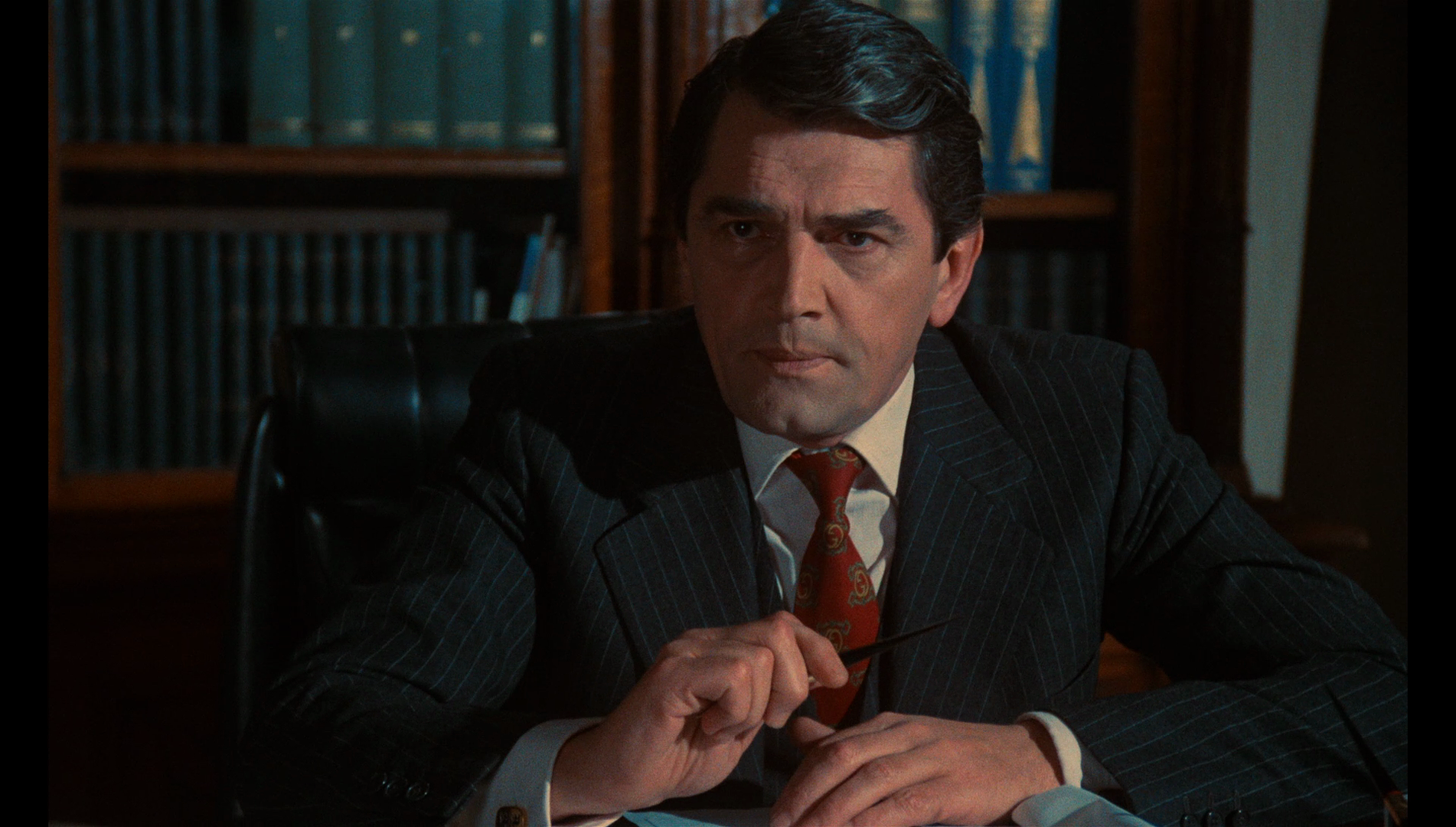
Arrow Video 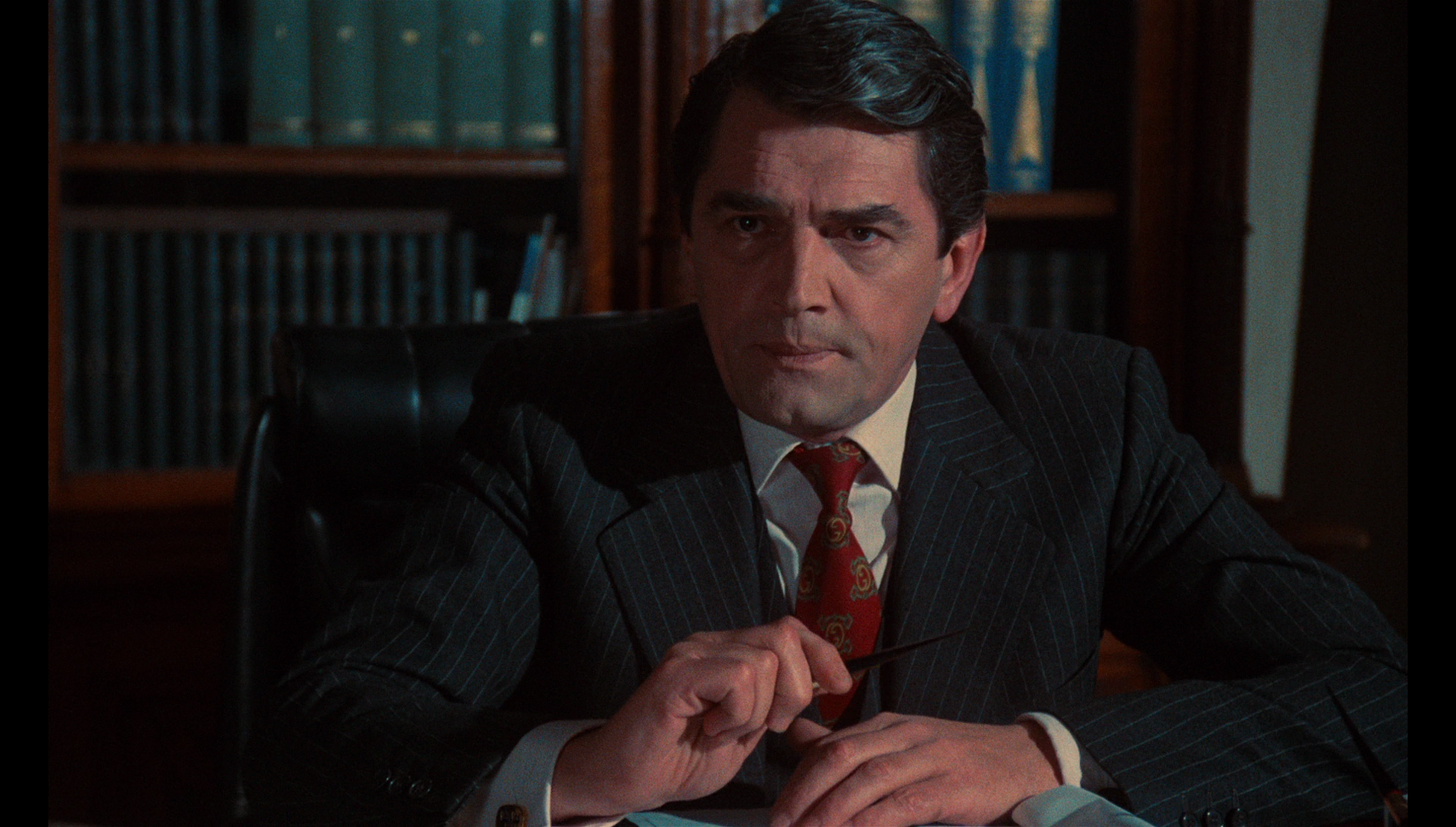
Grindhouse 
Arrow Video 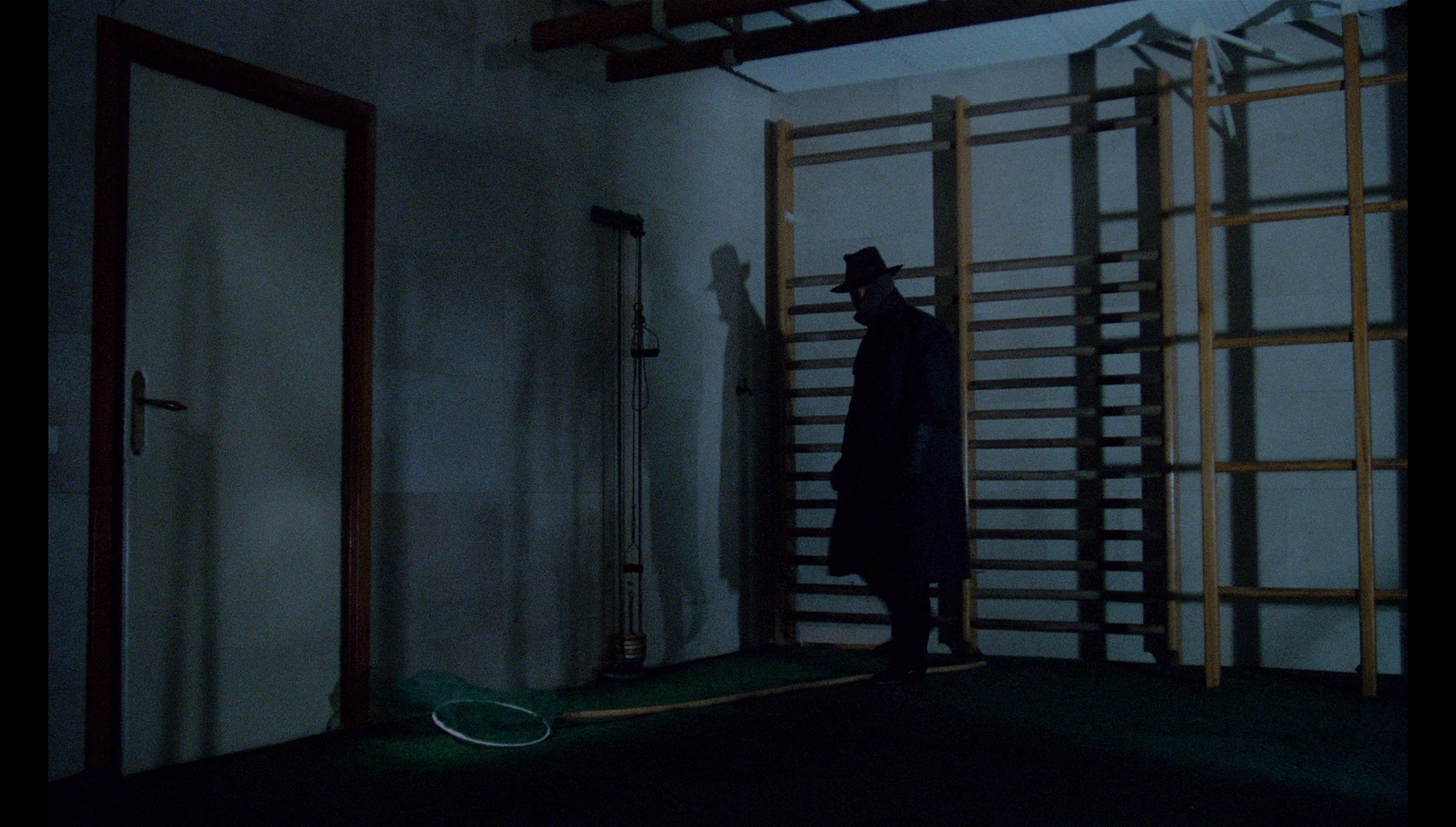
Grindhouse 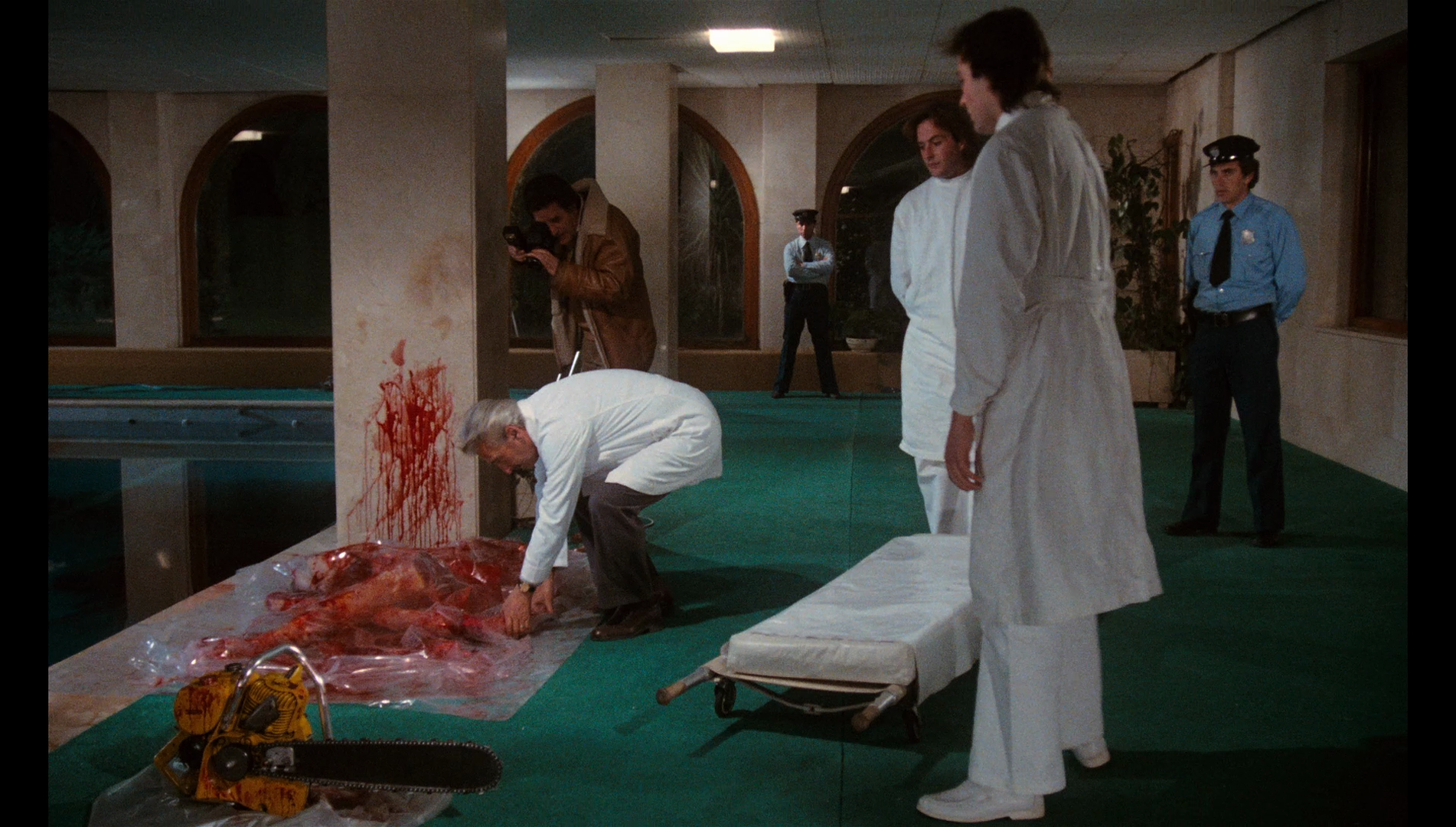

Grindhouse 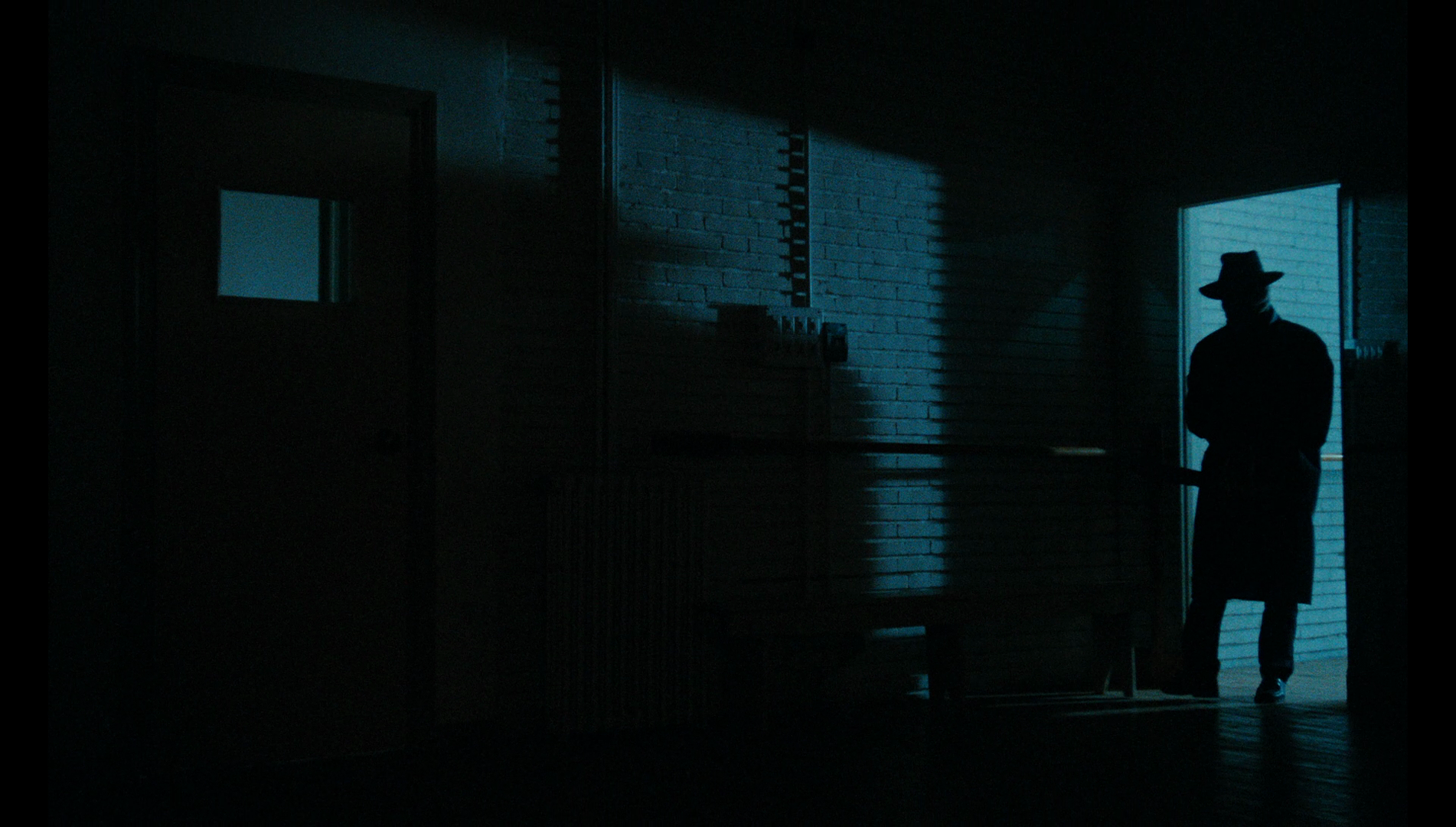
Arrow Video 
|
|||||

|